Well, this is a saga that I won’t soon forget, but I want to get it down here so I don’t miss so many details.
As many of you may know, I’d taken up learning the guitar a couple of years before we took the trip. I took a nice guitar with me on the RV portion, but oddly, didn’t end up playing much. The ideal time to play was after the kids went to bed, but I always felt like I would wake them up. Campfire playing is not ideal for me, as I need my music in front of me. I played probably once every three weeks or so.
There was some debate about whether to bring something to South America or not, and at Christmas, I thought I had my answer. Kim bought me a Ukulele, and it seemed like the perfect answer. However, once reality set in, and we had our bags packed, the Uke did not make the cut.
Of course a few weeks into our visit in Cusco, I started to get an intense itch to play. It certainly helped that there are so many guitars and musicians around. At any rate, I found myself doing web searches for “guitar cusco”. I was really looking for a rental and some lessons. What I found instead altered the course of my time in Cusco significantly! I found a lonely planet thread about the “Musicians, Ultimate Sourvenir in Cusco”. Somebody got referred to a Luthier named “Edy” in Cusco (Santiago, a non-tourist part), where they were able to help make their own Uke. Others had chimed in, they had found Edy, and had the experience of a lifetime helping to make their own guitars etc. The prices sounded too good to be true. (like 600 soles or 200 bucks for a high end guitar!). My birthday was coming up, and timing was perfect… I was stoked to say the least. Unfortunately, the last update from the post was from 2011, so there was cause for concern. Here is the fateful thread: https://www.lonelyplanet.com/thorntree/forums/americas-south-america/topics/musicians-in-cusco-the-ultimate-souvenier
We talked with Jimmy, our Spanish instructor, about the possibility of taking us to this “Calle Bella Vista, Santiago” to find Edy. There was no phone number, and the address was sketchy. Jimmy was game. The day we had planned to find Edy, I was not feeling well, so Kim and Jimmy went to look. They did not find Edy. They did find a Luthier who seemed open to the idea of letting a tourist help… his name was Luis Tunquipa. Kim brought me his card. It was pretty cheesy. I was bummed.
The next week, Jimmy and I went back over to Calle Bella Vista (that entire street is filled with instrument shops and luthiers). We checked into several places, and not only were the prices higher, but they looked at us like we had 2 heads when we asked about me helping in the shop. Our visit with Luis was not much better. He seemed pretty dis-interested, and the old guys working with him were not friendly at all. It was pretty weird, but I still really wanted it to happen. The choices were laid out “Cedar guitar – 300 soles” “Nogales or Coaba – 500” “Jacaranda – 700”. I’d find out later, there were other nuances to this choice, but these were good. Of course, I had an affinity for Jacaranda and Coaba, Luis recommended Nogales. Later, walking home, I mentioned to Jimmy that the welcome in the shop was tepid, and he said “He does not think you are going to do anything”.
A bit of time passed, and I tried to contact some other luthiers with no success. The novelty of the idea had warn off a bit, and I was concerned… Edy the mythical master craftsman, who everybody raved about, was not part of the equation. Luis had told me that he was indeed in Edy’s old shop, but Edy was now a Truck Driver or something. Nobody in the shop spoke a lick of English, so at times (all of theme), conversation was difficult. And Luis looked too young to be good at anything! The shop was TINY, and cramped. It was a long way from my house, and it was a “shady” part of town. It was going to take a lot of time. There were endless reasons to let this great idea languish into the ether.
And then, we met the Watanabe’s from Toronto. Acutally, Kim met them first. Kim and the kids did a ruins tour with some friends, and the Anthony, Rose, Emile, and Felix had just arrived and joined the tour. They are really into music, and Kim shared with them this idea that I was working on. They were so jazzed. Emile was in the market for a guitar, and Anthony had ideas about making one for his brother back home in Toronto. When I met them, it was all Emile wanted to talk about! It re-energized me. I took those guys over to the shop, we talked some more about details, and I figured it was “…. or get off the pot time”, so I signed a “contract” for a Jacaranda guitar. We agreed on a start date, and I put 1/3 down.
An interesting thing did happen when we talked about the wood for the face of the guitar. It turned out that the price I was quoted included a top that was a bunch of glued strips of pine (maybe 6/8 strips), if I wanted a “two piece” pine top, that was an extra 250 soles. I really didn’t want a premium wood guitar with a glued top. We talked a bit about what was better, and eventually, we got our wires crossed when he wrote up the order, he wrote “2 piece pine top guitar – 700 soles”, then he wrote Nogales. I argued that I wanted the Jacaranda. Eventually, he gave up and changed it to Jacaranda, so I essentially got the wood upgrade for the top for free. At the time I was thinking, well, I’m doing some of the work, so It’s still probably a good deal for him. It was probably the only time playing dumb re: language worked in my favor.
The agreed to start date came, and I was super anxious. I didn’t know at all what to expect. I figured he’d try to downgrade the pine top to the glued one, and I was ready for an argument on that point at least. We had talked about starting at 8:30am, and generally about working from 8:30 – 10:30 each day. This would allow me to take one of the kids to school, and get there in perfect time. It would also allow me to get to Spanish school at 11:00 4 days per week. This day, I arrived, and the good news was that the shop was open. The bad news was that there was junk piled in front, and several guys were basically cleaning the place… sort of like my Dad re-organizing his garage once every 10 years. The shop was packed to the gills with people, equipment, instruments in all sorts of state, wood, scraps of wood, and trash. It quickly became apparent that no instrument building was going to happen that day. Luis showed up after 20 minutes, and we agreed to start the next day.
The next day, I arrived at 8:15, and the shop was locked up. The “Se vende” sign out front become ominous as I sat and drank my coffee. What if he closed up shop and took my 250 soles? I waited for an hour, and nobody came, so I went home, dejected. I should note, sitting on the curb here is not something a lot of gringos do. I got a lot of strange looks!
Other than those first two days, I was “stood up” at the shop only a couple of other times. It’s just something that’s part of the culture there… things happen when they happen. I did miss a couple of meetings myself as well when either I was sick or one of the kids was. Luis was late “a lot”, he never made a big fuss about it, and my jabs were mostly good natured. “Tu Estas Tarde” (you are late!) I would say. When we agreed on the next meeting time, I would ask several times and raise my eyebrows. He got my point. I started easing up on my effort to arrive on time. The real problem was the 2 hour work window. It’s not practical when you start 1/2 hour late. It’s not all that practical anyway, if you ever want a finished guitar. It’s a long process.
Well, we got to work, and soon Luis noticed my camera. I had decided early on that I wanted to document the entire process and make a video. As we got to know each other, I told Luis that I’d give him the photos I took, and I’d make a video for him. He really liked this idea. I ended up with 1300 photos, and over 2 hours of HD video. As a result, I believe Luis put painstaking effort into building me a good guitar. Little details were attended to. At least that is the feeling I got.
One thing that was a bit uncomfortable for me was, the guys in the shop were always curious about money. They always wanted to know where I was traveling and what it cost. They wanted to know about the work I do. They wanted to know how much my camera cost etc. When I told them what I paid for my camera, the old guy, Andres (who had been mostly quiet), exploded into stream of nasty Spanish. I didn’t understand any of it, but I’m certain that he was extremely irritated that I was getting the upgraded top of the guitar for “free”. It took Andres a long time to soften up to me.
The other guys in the shop were quite friendly actually. There was Benjamin, who worked the first few days (organizing the shop), and helping with finishes (lacquer and stain, sanding). Benjamin was the nicest one, and the best at translating my poor Spanish to the rest. He also played a mean Mandolin. There was a jacaranda mandolin in the shop that probably sealed the deal for me. It sounded so great, and looked beautiful. And since all of his acoustic guitars were strung classically (with 3 nylon strings, and 3 metal), it was the mandolin that convinced me that the jacaranda guitar would end up “bright enough”.
Martin was another guy who worked Fri-Sun with Luis. He worked someplace else during the week, but I could never quite understand where. Martin was probably the most refined guy in this shop, probably early/mid 60’s. He was clean, nice enough, but mostly business. I had to work a bit harder to get his attention. I definitely got his attention when the topic of Kim’s work came up. I told them that she used to sell Viagra. They had never heard of it, and I didn’t know the word for “erectile disfunction”, so we did what we usually did, and played charades. They got it pretty quickly, and Marin was intrigued. The day I dropped off the video (and Luis stood me up), while I was waiting for Luis’s Wife to return from his house with the thumb drive that I had given him (to put the video on), I walked down the street to a pharmacy and bought 2 viagra pills for Martin. He was SO excited, but he absolutely refused to let me take his picture with the pills! I told him I would photoshop it… he didn’t understand. I told him to take 1 pill, 1 hour before “tiemp de negotiones” (business time). He got it.
Luis’s wife (I never learned her name…she never spoke to me), and his son Ector (he must have been 18 months or so) spent a ton of time in the shop. I remember the first time his wife showed up at the doorway, holding a bag of food. She just stood there for 5 minutes, and Luis kept working. After a bit I said to Luis “I think she wants to sell you some food”. That was the routine. She would show up with lunch (and Ector) late morning, they would eat lunch together, and sometime, she would help build guitars. Ector would often either nap, or run around and play in the shop. More than once, I feared for my guitar because hector was swinging something heavy or sharp around!
When we were mostly done with the guitar, and I was alone in the shop with Luis, he was trying to ask me a question, and I didn’t quite understand. I thought he was asking me to speak with someone, perhaps Ectors Grandfather. Then Luis asked if I could some with him to use the computer together after we were done for the day. I figured he needed help with something, but had no clue what. So later that day, I followed him to the internet cafe. We got a computer, and pulled up Google translate. He typed his question in Spanish, and when I read the English translation, I almost fell over. Luis was asking me to be Ector’s Godfather! I had to stifle a giggle. I wanted to treat the request with respect, but my initial thought was that he was angling for something… money or gifts. I essentially told him that I was honored, but I needed to think about it and talk with my wife. I eventually talked with a few locals about this, and decided that it was a legit request, and kind of an honor, but at the end of the day, I didn’t feel like I could fill that role for Ector. It might have been a good status symbol for him, or perhaps good luck to have a gringo, but as a practical matter, I never really planned on coming back to Peru, and the best ability is availability. I did fret over this for awhile, and I didn’t want to officially turn him down until after my Guitar was done. I was not sure how it would be received. So I just begged for more time, until it was too late.
There were various other younger guys in and out, I never really knew what their roles where, seemingly helpers for the day. They always got a kick out of chatting with the gringo, and asking questions about money and the US. It must have been sometime the 2nd week, when somebody came into the shop, and they asked me my name. I paused for a moment, because, when the trip to South America started, I had a grand scheme to be known as “Caballo Loco” (Crazy Horse). I figured Cusco was small, and I could make a name for myself. Until this point, it had never worked out (or I had chickened out). For some reason, I answered the guy “Caballo Blanco” (not sure why loco changed to blanco on the fly, other than there was a character in the book “Born to Run”, named Caballo Blanco). So, from then on, in the shop, I was knows as Caballo Blanco. The guys would call me that, and they would introduce me to new guys that way too. We all got a good kick out of that.
I wasn’t the only one in the shop with a nickname. Andres (the old grumpy guy mentioned before) had one too. Luis gave it to him. There was a young auditor who worked for the bank who started coming around and asking lots of questions. I still don’t really know what she was doing, but I feared that the bank was foreclosing on the shop. She was trying to assess the value of the business… taking painstaking inventory, and reviewing the receipts etc. She always wore high-heels, and struggled coming into and out of the shop. She was not particularly friendly. Once I spelled Jacaranda for her because she didn’t know how, and she was offended. Anyway, she wore tight pants, and Andres liked it. When she would bend over or anything remotely provocative, Andres’ eyes would bulge. Luis and I started making fun of Andres one day soon after she left the shop. Well, I started, and Luis dog-piled. My first Spanish dog-pile was glorious. Anyway, out of that emerged a nickname for Andres. “The Oogler”. I’m not sure if he ever understood what it meant, or what the genesis was. It was more of a private joke between Luis and I, but it still makes me giddy thinking about it for some reason. Probably because when I look back at how serious and sour those guys were when I met them, and the times when we all had tremendous (belly) laughs together later, it amazes me.
Back to the guitar making…
It was spectacular. Starting with raw wood, and mostly with hand tools, Luis proceeded to make my guitar. He would allow me to jump in and help at any point I wanted and do as much as I wanted. However, I made it clear from the beginning that I wanted him to make the guitar, with help from me.
I really enjoyed watching and recording him as much as working on it myself. I started getting really excited about how the video might turn out. Ultimately, I decided to make the video for Luis, and simply include footage of him making it. That is pretty well documented in the youtube video here: http://www.youtube.com/watch?v=tPFawom6Ij0
Someplace, I need a list of the parts I did though. Here is my best memory:
1) I helped cut the neck stock down with the handsaw. That was interesting because they put the wood horizontal, and the saw vertical (think handle at top and going up and down). I’ve never used a saw that way.
2) I helped (some) with the hand carving of the “heel” (the curved part at the bottom of the neck). That was scary, I felt like a surgeon doing his first appendectomy.
3) I did a “ton” of planing with the hand plane. This included the wood for the sides, and the wood for the back (before they were glued together). The video shows Luis doing this for 3 seconds, but we would work for an hour planing that Jacaranda. It was hard work!
4) I planed the pine support braces that were glued to the top and back. Interestingly, he had me plane curves on the ones for the back, and I assumed the curves would be “inside the guitar” (not glued to the back). WRONG, the curves I made with the plane, actually define the curve of the back of my guitar. YIKES.
5) I sanded, by hand, every one of the cedar blocks used to glue the top of the guitar to the sides. The little wedge shaped blocks. Every surface was sanded. The two surfaces with glue, with coarse grain, and the other three with find grain. Lots of work.
6) I hand-cut the tiny black and white strips of vinyl that made up the corner protectors on the top of the guitar. Sounds easy, but those tiny strips started as a 1 inch wide strip, and had to be cut into 6 equal strips, the entire length of the circumference of the guitar body. (like 6 feet). Both Black and White! With no guide. I’m shocked he was able to use what I did.
7) I scraped with a straight edge, “most” of the excess vinyl from the corner protectors… mostly on the back. On the front, I was mortified that I was ruining the pine top. After I struggled with a rough blade, luis broke out a special scraper tool, and made it look easy. I’m sure the tool he used was much easier that what I got! 🙂
8) I did a little bit of sanding here and there.
I’d also like to keep a list of choices that I made along the way. Afterall, that’s what makes my guitar special.
1) Wood type. Jacaranda sides/back. Pine Top. I chose the 2 piece “premium” pine, which had a tighter grain as well. The neck is always cedar. The fretboard is always Jacaranda. I chose a Nogal veneer for the head.
2) Shape and Size. I ended up with a classical guitar with no cut-out. My other guitar has a cutout, and I wanted something different.
3) Tuner style and strings. I went with all metal strings because I like the bright sound vs the nylon ones. I chose the “open head” style tuners because those are Latin, and I wanted it to look like a latin guitar. (that may have been a mistake… I don’t know yet)
4) The soundhole rosette. I thought he told me I could make up my own pattern (that is what Jimmy said). Ultimately, he had a few to choose from, and I choose the one that seemed “Incan”, but not tacky. I also chose one that would look good with black or grey because that is how I wanted it finished.
5) The shape of the head. I wanted something simple, and most of the guitars here are pretty fancy (just the top of the head). Luis did not like my angular idea, and I hated his curvy, beveled design, so we compromised with more subtle curves.
6) The shape and location of the end of the fretboard at the soundhole. I had no idea I’d need to weigh in on this, but I’m glad I did. I liked the gentle curve there, much better than anything he had in the shop.
7) The colors and the finish. I knew I wanted a matte finish on the body, and it was difficult to communicate this and keep him to it. They really want to make everything high gloss. I was going for the look of the Jacaranda flutes that I saw in La Paz, Bolivia. We didn’t achieve that level of silkiness, but it’s pretty good. I initially wanted a black guitar (the top), but I wanted to see the grain. We searched for a black stain that would be pleasing. We tried almost every stain he had, and I bought one from “Mexicolor” too. They were all mediocre. I settled on a natural finish on the top after I saw how pretty the wood was sanded. All along I wanted a glossy top to contrast the matte body/sides.
8) The shape of the bridge. This is the wood part that holds the strings at the bottom (opposite end from tuning pins). I went with another gentle curve here and like it. I should note that the bridge and the saddle (the bone piece that holds the strings out above the bridge), are two things that probably need tweaking. If I had had more time to play it, and could have had Luis work on it more, I’d have had him work on those. The problem is with the “intonation” especially on the lower strings. If you look at most guitars, the saddle is angled. It’s farther way from the nut on the low “E” that it is on the high “E”. Mine goes straight across. I think Luis tried to accomodate that, by making the saddle (the bone), higher at the low “E”, thereby making the string a tad longer. I didn’t like the action, and asked him to lower some of those strings. As a result, I think it can sound better with some adjustments.
9) The truss rod. This was kind of a big one. When we went to Boliva, we started looking for a small guitar for Kane in La Paz. The first thing I noticed was the small guitars where not tuned to the standard key. Then I noticed that the really nice ones with all metal strings, had jacaranda re-enforcements on the neck. I also asked the guy if he could replace the nylon strings with metal (on a cheaper guitar) and he said the guitar would fall apart. I started getting really nervous that Luis did not know how to built a guitar with metal strings. My neck was cedar.
So, when I got back, I asked Luis about the neck and being strong enough for metal strings. I told him about the one I had seen with Jacaranda inserts. He got really interested, and asked for pictures. I got really worried.
In anticipation of warping the neck, I asked about a truss rod (these are pretty common, steel rod with a hex key for straightening the neck). He said it would normally cost 70 soles, but he would give me one since I was making the video. When the time came, it seemed as though he was skipping the rod, so I kept the pressure on him. He had a rod, but it was too long. I asked if we could cut it down. And that’s what we did. He cut it with a hacksaw, then we took it around the corner (literally) to a welding shop and had the top re-welded (so the hex key would work after the cut). Then I went around another corner and bought electrical tape to wrap it up. It was amazing. Funniest thing was when the welder didn’t understand Luis, and tried to weld the tip back on that we just cut off!
OK, two more major anecdotes and I’m done, I promise.
It was coming down to crunch time for me. We had scheduled a trip to the Amazon, and the guitar was “almost” done. I’d seen enough goings on in the shop to NOT want my finished guitar banging around for a week there without me. (they don’t have a proper place to store finished instruments). We needed one more solid day of work to finish it. Kim needed a girls day with Rose. I figured I’d already burned enough time and money, and didn’t dare risk asking Kim to take the kids or cancel on Rose. Furthermore, Anthony and kids wanted to go rock climbing, and we weren’t going to see them after we left for the Amazon.
So, I arranged to pick up my guitar from Luis at around 3pm on Saturday, trusting him to finish it without me. I took the kids with Anthony and we went rock climbing. Rock climbing went a bit longer than we planned, and we arrived back in Cusco at about 4:00. Anthony was interested in seeing my guitar too, so we all walked from our drop off to the shop (a 15 minute walk through a rough, local market area). I’d not been with the kids over in this part of town before and it was weird.
It was Saturday, so the “black market” was going on, on Calle Bella Vista. This added to the strangeness of the situation. Two gringos, with 4 kids, walking through the black market at the end of the day. Then, we arrived at the shop, and alas, the guitar was not done yet! Luis estimated that it would be ready in 20 minutes. The kids had not eaten since lunch (and lunch was poor, a bad cheese sandwich). It was starting to rain outside.
Believe it or not, things got even weirder from here. Anthony admired my guitar, said goodbye, and left the scene. He knew where this was headed! I asked the kids to sit still, got my camera out and started shooting. I soon noticed that the finish on the top was not great. It had several uneven spots etc. I started to sweat because I was stuck between wanting to take the guitar home with me (and wanting to pay him), and the quality of the end result. I also didn’t want to upset him, but I was not happy with it.
So, I started pointing things out, and he started working on them. He wet sanded for ever on the stop, and it got smoother, but it lost it’s polish. He then waxed it with auto-wax to put the polish back on it. It looked better, but not great. I started sweating more. The kids were hungry and complaining. I sent them across the street with some money to get dinner. (I could see straight across). Restaurant would not serve them any food.
About that time, it started to downpour, and the street turned into a river. It was chaos as the venders tried to pack up and get out. Vendors started piling stuff in Luis’ Shop! Then I look up and Andres is at the door.
Andres, aka “The Oogler” is the old Luthier, who got mad when he found out what my camera cost. In an effort to make small talk, and get him to like me about a month before, I’d asked him what kind of beer he liked… “Pilsen” he said. I told him before I left Cusco, that I’d bring him some. He’d started asking me about it every day, and I assured him I would not forget. I knew he didn’t work on Saturday, so I had not worried about it. Andres is wasted. He’s soaking wet, smells of urine, has thick green snot falling from his nose and jacket, and he’s stinking drunk. My kids are here.
I could not believe the scene. In my wildest dreams, I could never have imagined this situation. I didn’t know a Sabbatical could be this stressful. How did I end up in this mess? So now, in addition to cranky, hungry kids, you can add stressed and scared to that. Now, my concern for my guitar being damaged by leaving it in the shop, or for the quality of the finish, is joined by real concern that Andres is going to destroy it by accident. Luis is saying nothing to or about Andres. We are in a “bad” part of town, it’s now dark, and it’s pouring down rain. If I decide to take my guitar home, I don’t know if it’s more likely to be stolen or destroyed by water. On top of this, Kim expected us home at 4:30, and now it’s 7:00.
Andres wanted to shake hands, and he wanted to be friendly. The reason is, Andres wants his beer, and he wants it now. Just one. Out of resect, I did shake his hand, and I told him repeatedly, that he did not need any more beer today. I told him I would bring him some another day. It was an ongoing debate. I don’t think my kids will either one ever try alcohol. They still do an Andres imitation from time to time… saying “OK!” in a chesty way that’s best done in person.
We managed to get the guitar “passable”, and I asked Luis for a case to borrow. He ran and bought a case down the street, and I borrowed it. Luis, recognizing that I was not comfortable getting to a cab, walked us down the street and stayed with us until we got one. Bless him for that. I was glad to be out of there, with the guitar in hand, but I felt like I’d be back asking for some tweaks.
I had no idea the extent of the tweaks I’d ask for! After we got back from 2 weeks in Argentina (and it had evidently been cold while we were gone), I got my guitar out to play, and noticed that the entire top was filled with hairline cracks. My worst fear had come true.
When Luis and I were at Mexicolor (paint store) looking for Grey stain, the lady at the store convinced Luis to try a different type of lacquer (it was on sale). Evidently, Luis bought it after I left, and my guitar was the second instrument he used it on. It failed. My heart sank. Now, I still owed Luis his pictures and a video. We only had a few weeks left in Peru. Luis was waiting to hear if I would be his son’s Godfather. And I needed my guitar refinished.
As most things do, it worked out. The day I brought Luis his pictures (I gave him a 16 GB thumb drive), I also brought my guitar back. He immediately acknowledged the issue and agreed to work on it. He did at first think I took it to Argentina with me, and was ready to blame climate change, but I set him straight there. I really didn’t know what to expect, but Luis seemed happy, and so I pointed out a couple of other spots of concern on the sides/back. We agreed on a date, and I was happy that he wanted that video so badly. He didn’t ask about the Godfather thing, because I think others were in the shop with us.
When I picked up my guitar (just before our friends from the states came down to visit… and take the guitar back), it was amazing. He had essentially refinished the entire thing, and it looked great. Better than it ever did that first night I “picked it up”.
All in all, my guitar making adventure in Cusco was much more than I ever expected. In some ways, it was much more difficult that I thought. In a lot of ways, it was way more interesting than I thought. As in most things in life, it’s the memory of the human experiences that will endure. The guitar is a great souvenir, but my time in the shop and the memory of those crazy experiences there cast a pretty big shadow.
Since I have the video on YouTube that pretty well captures the process of making the guitar, I tried to select photos here that either struck me as unique to the video, or helped tell the more human story of my time there. It’s a bit of a mixed bag. If anybody wants more, there’s plenty.

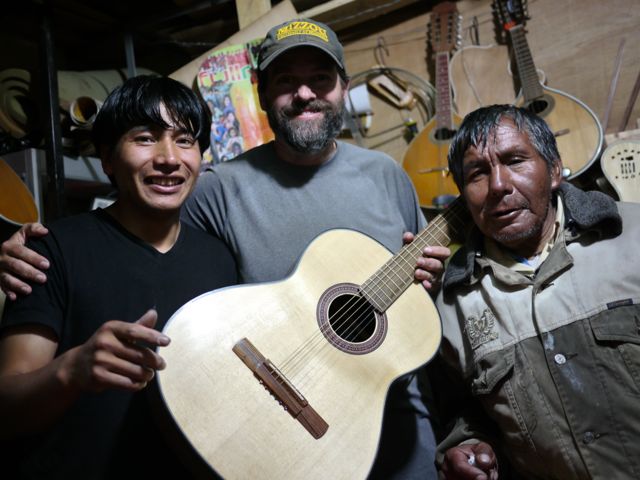
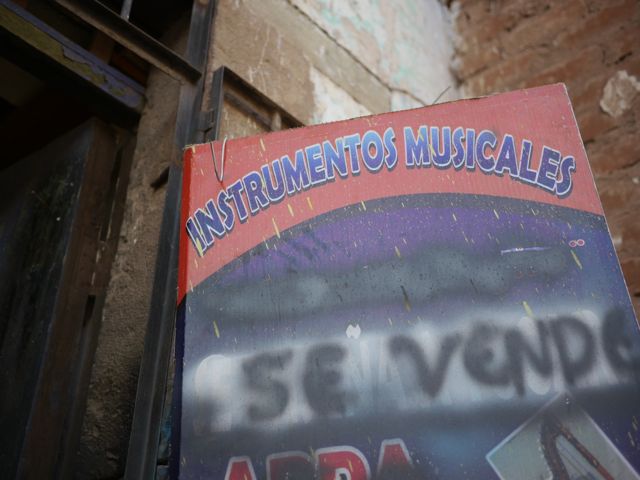
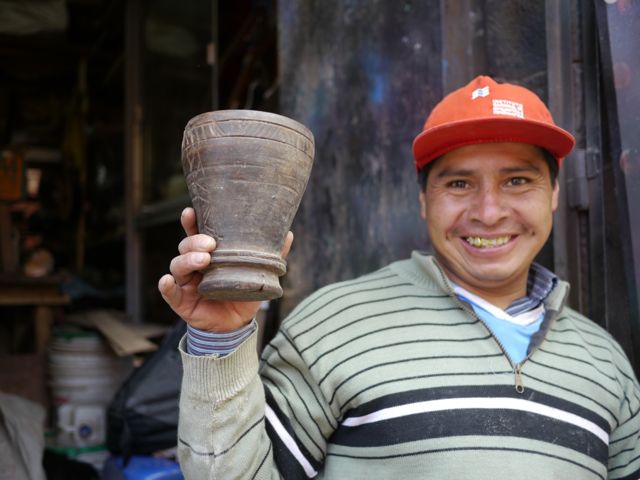
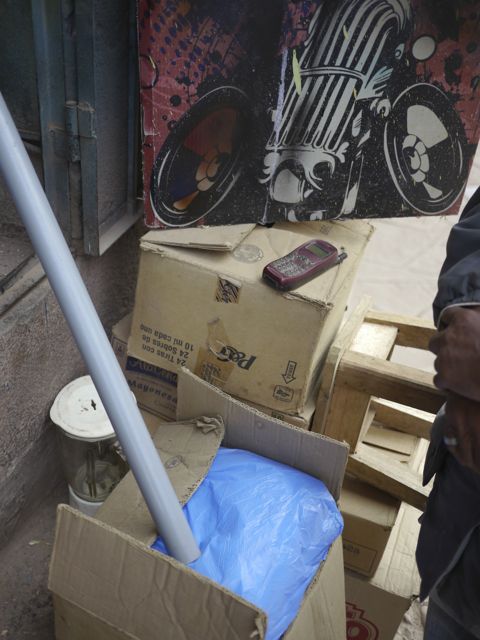
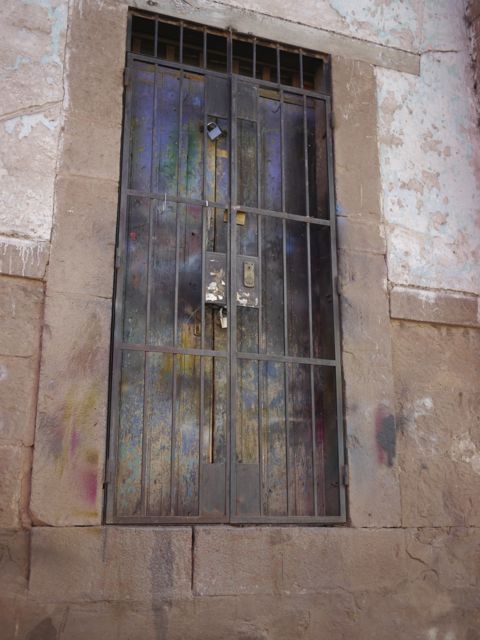
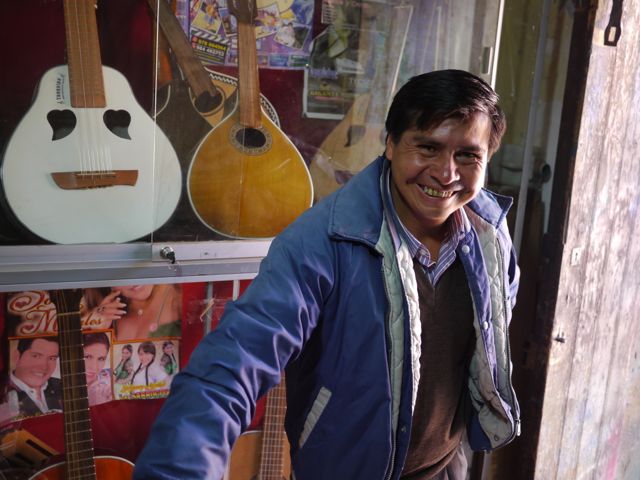

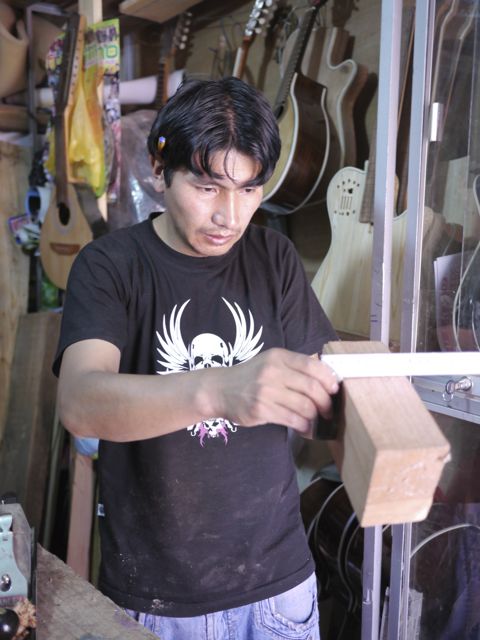
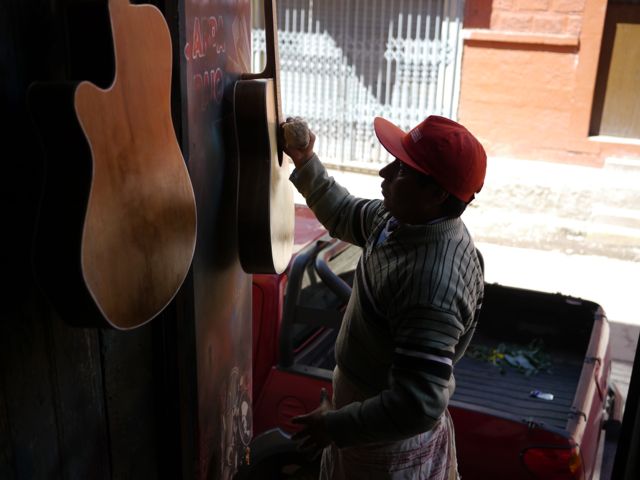
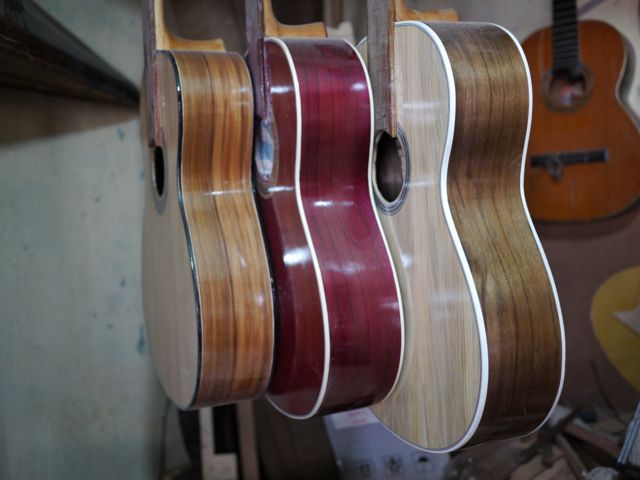
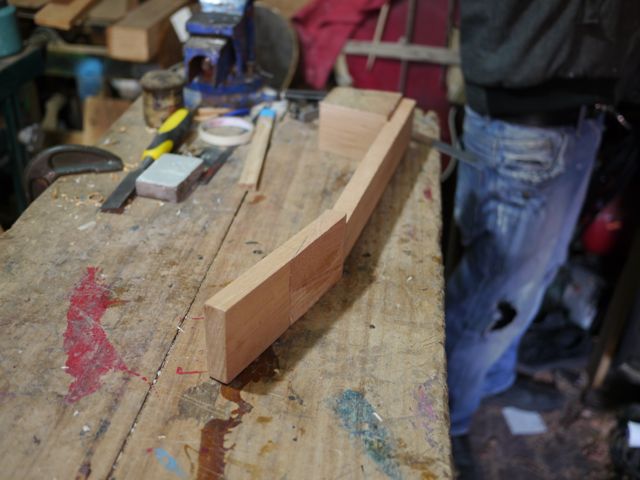
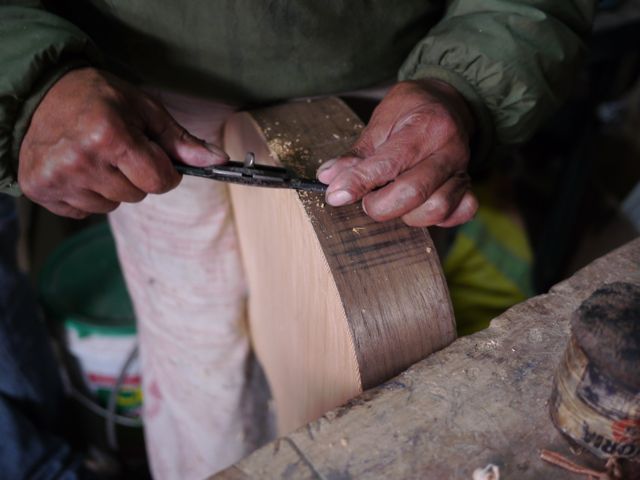
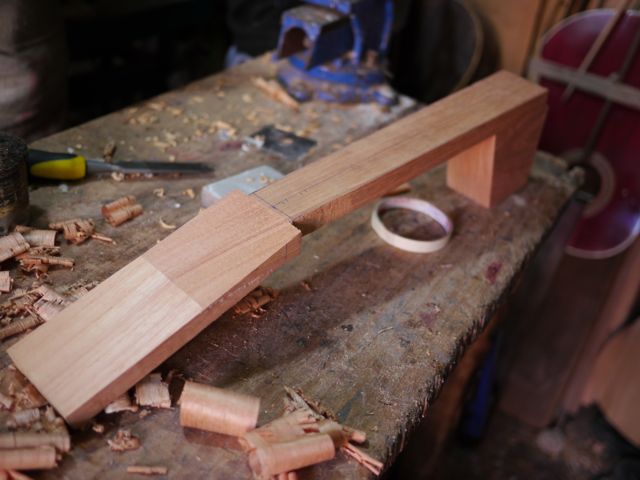

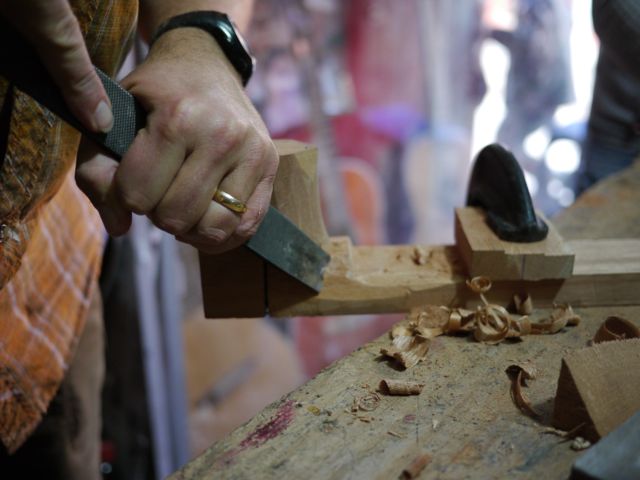
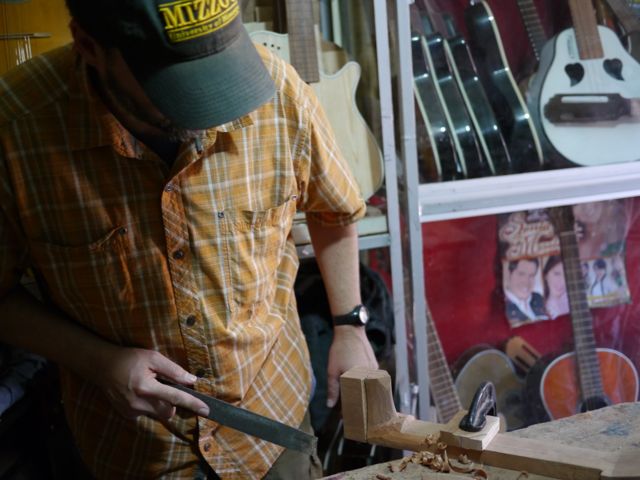
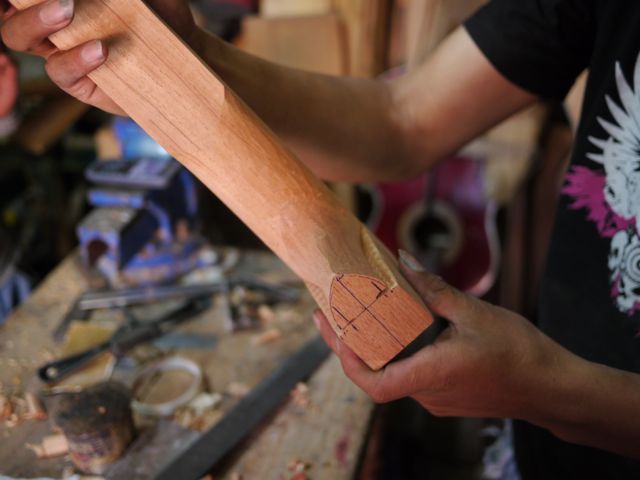

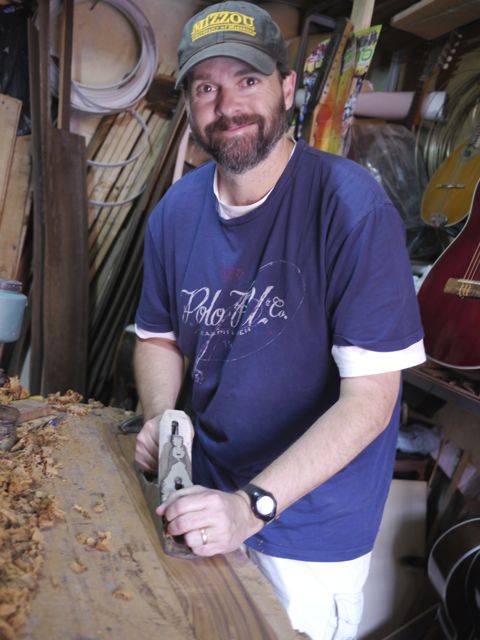
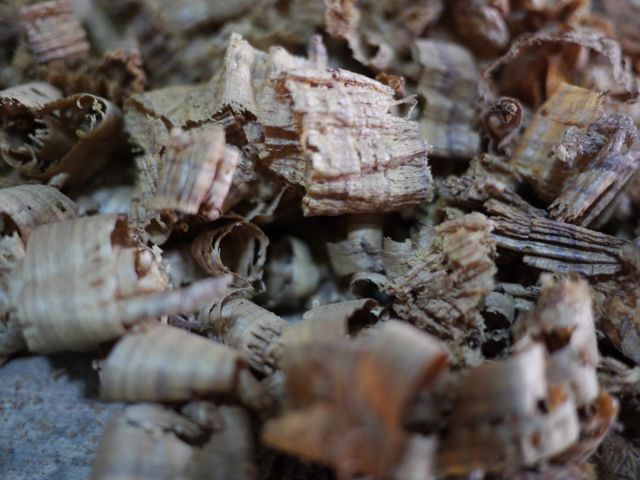

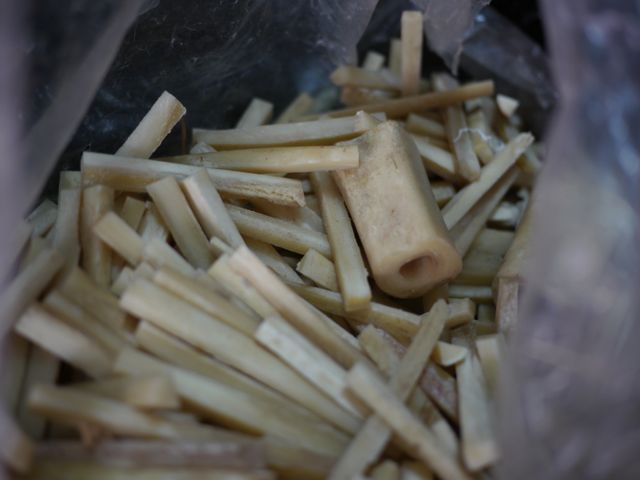
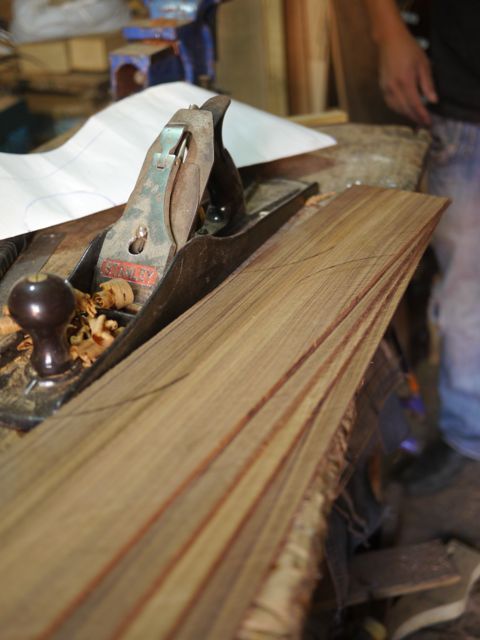
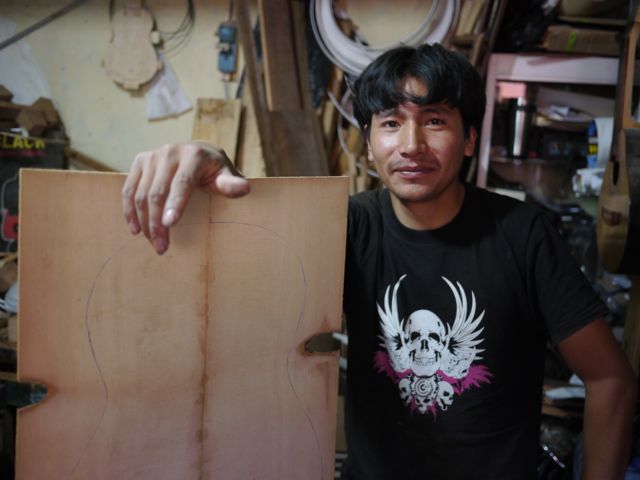

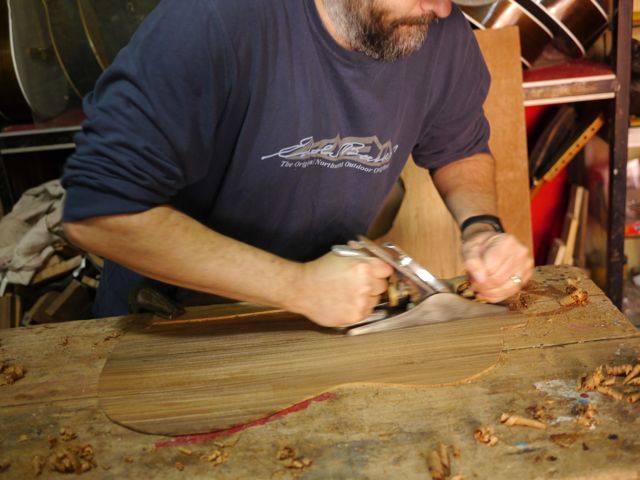

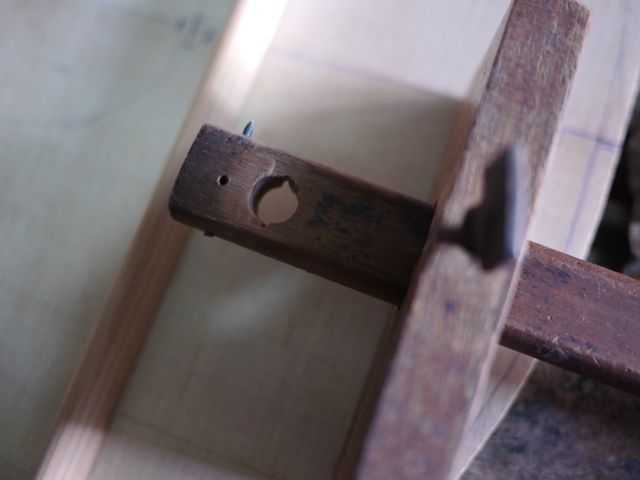
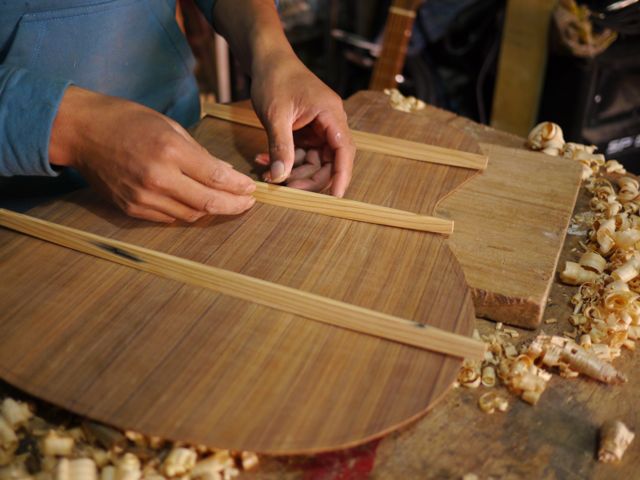
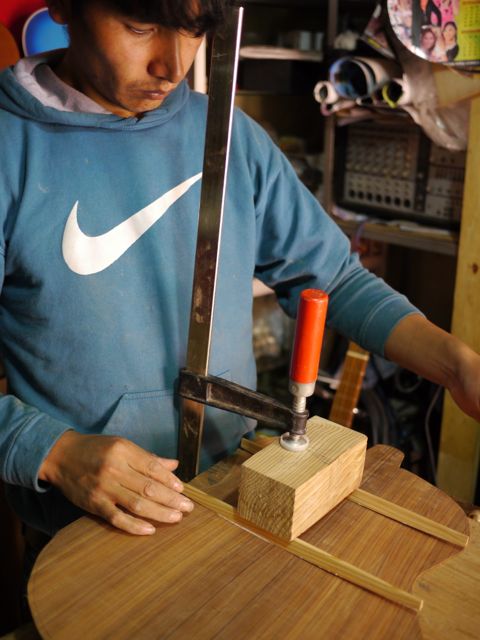
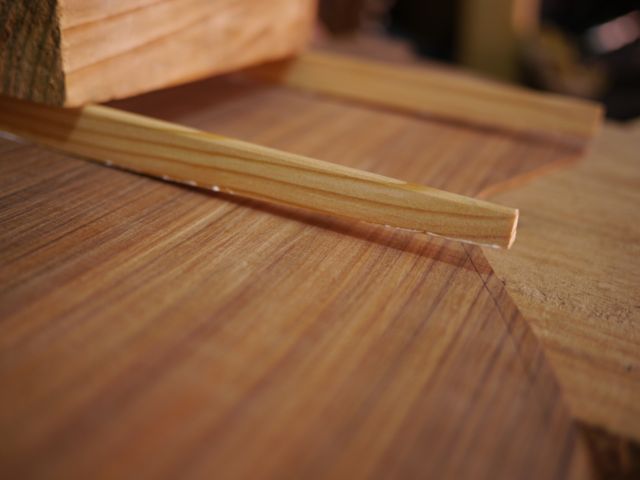

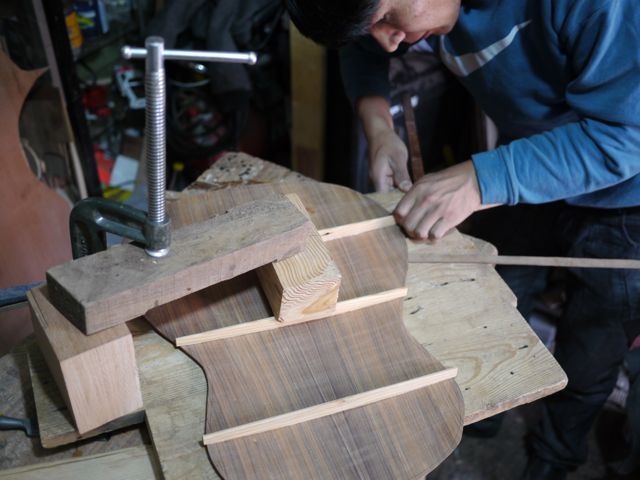
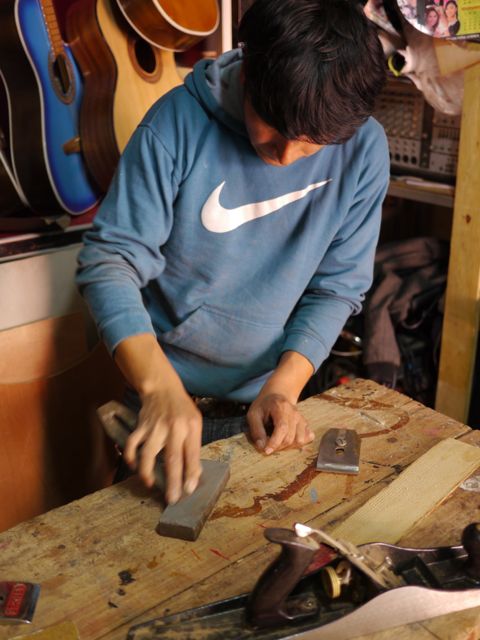
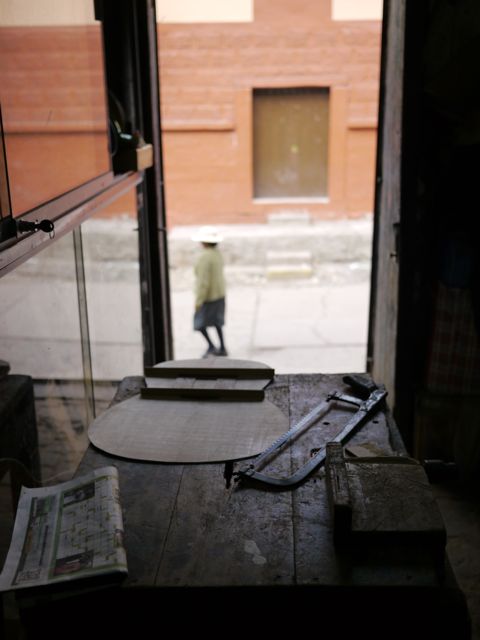
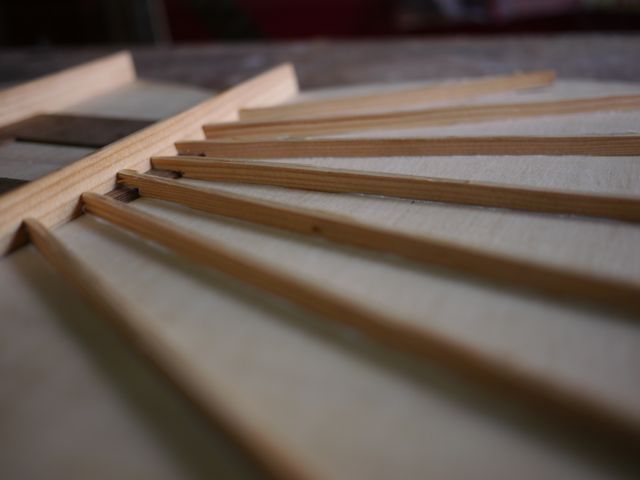
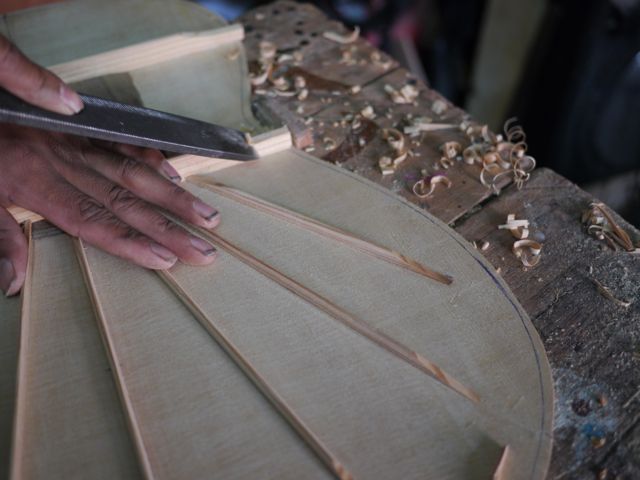

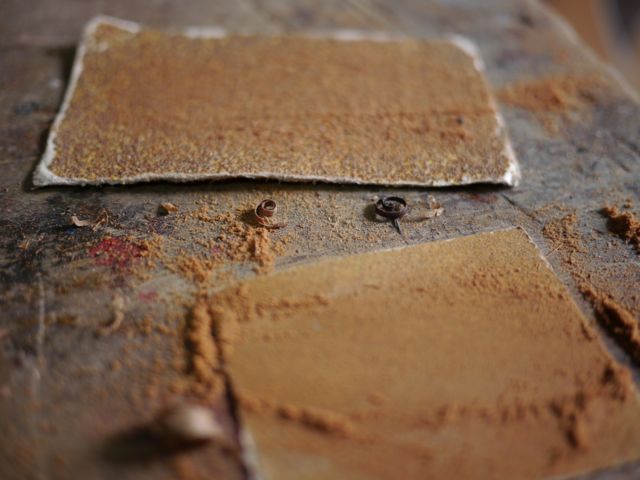
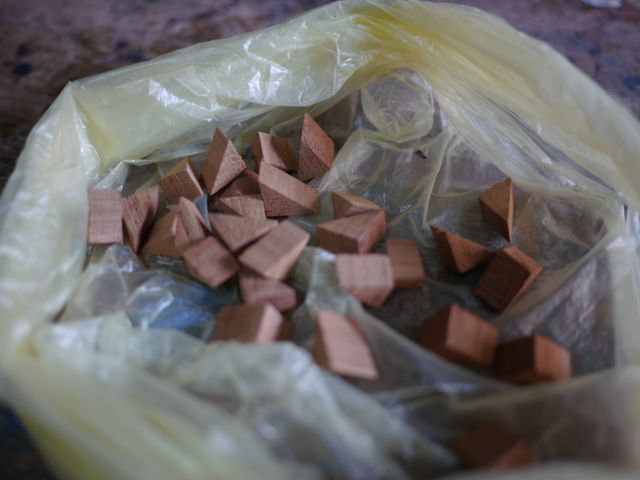
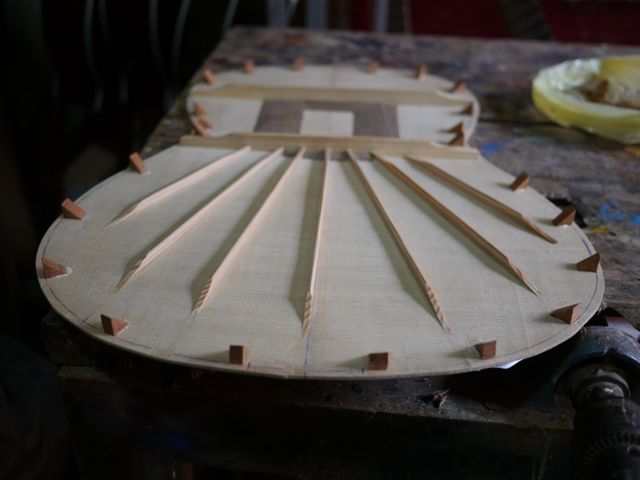

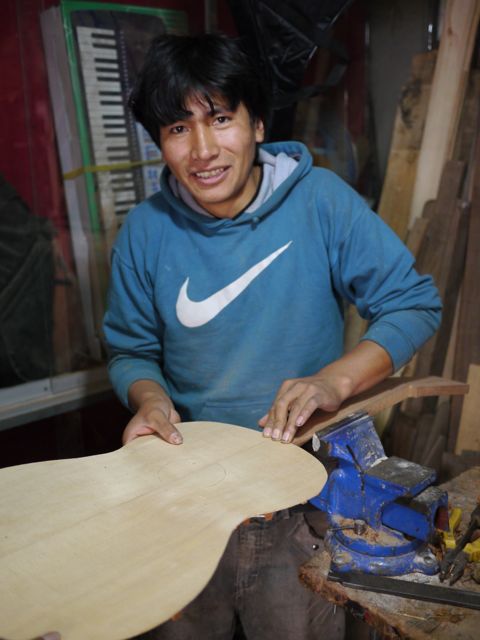
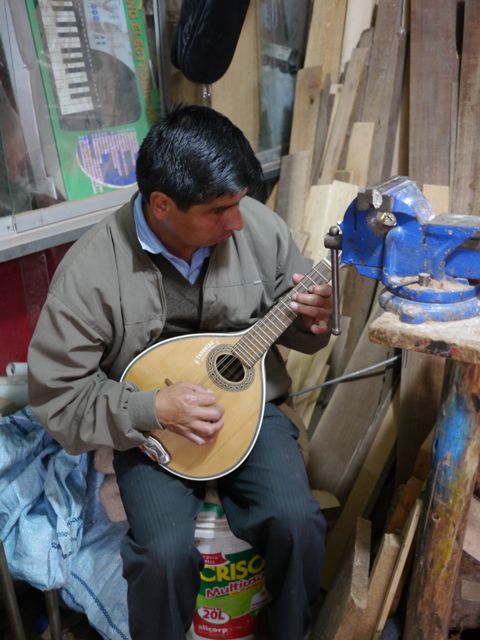
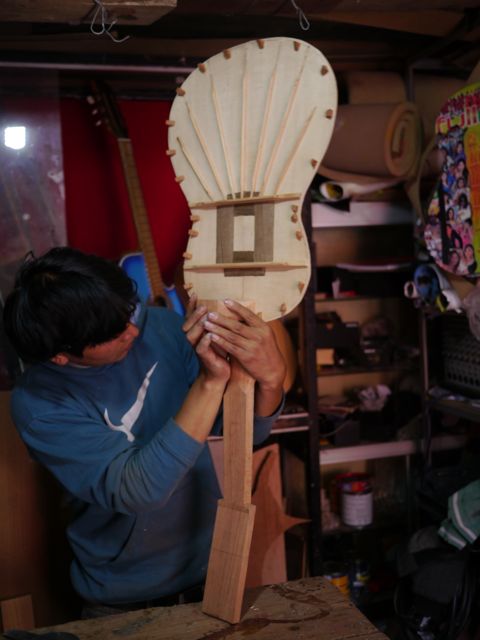
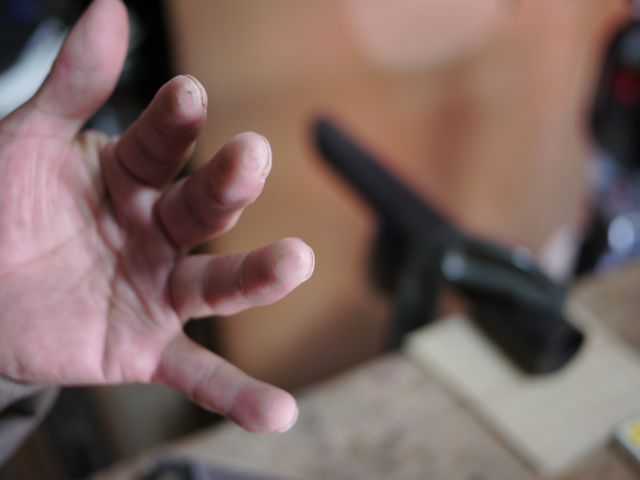
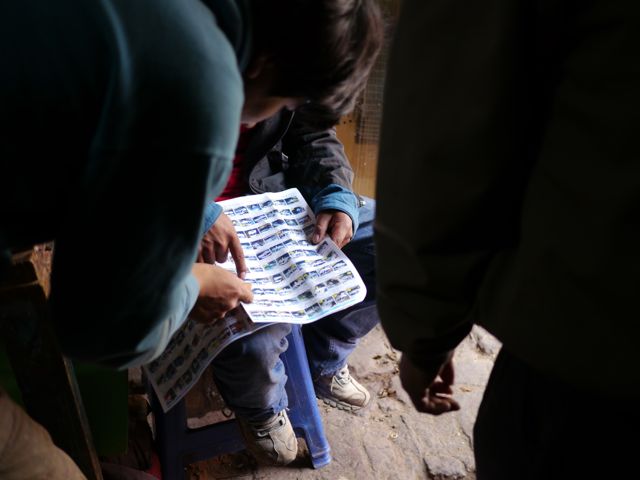
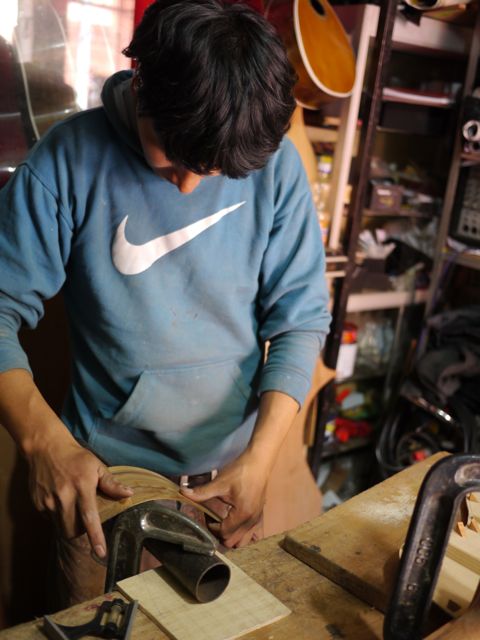
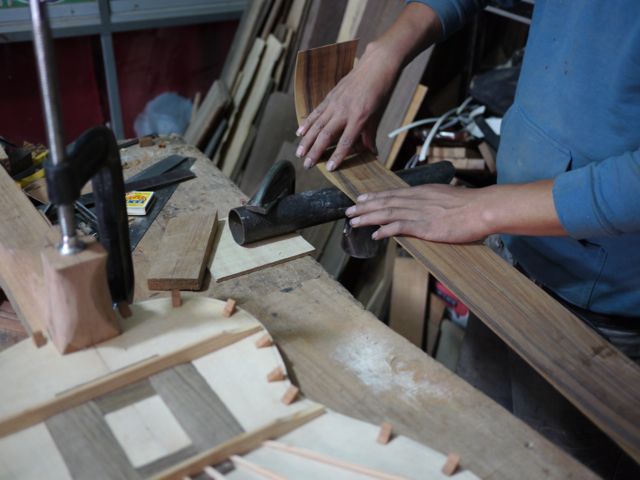
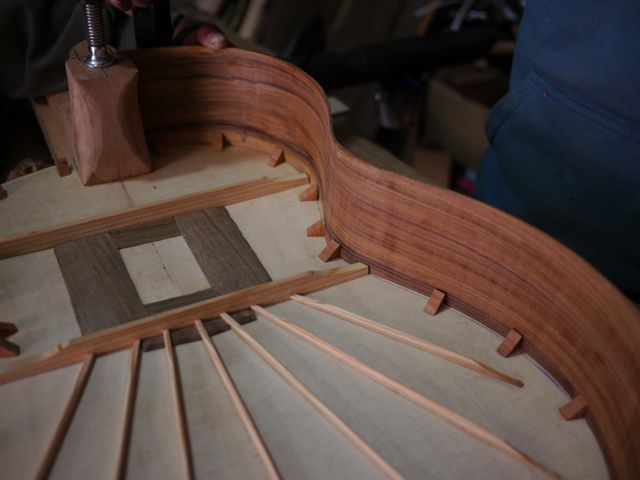

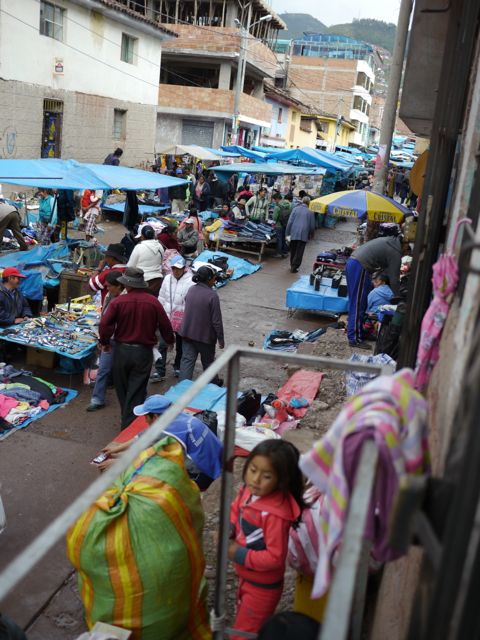
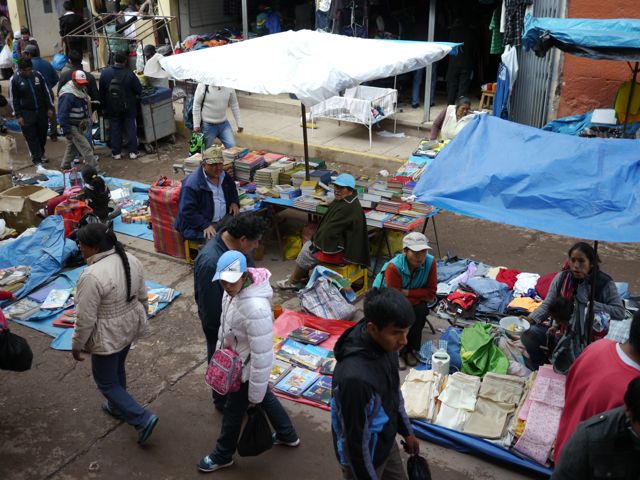

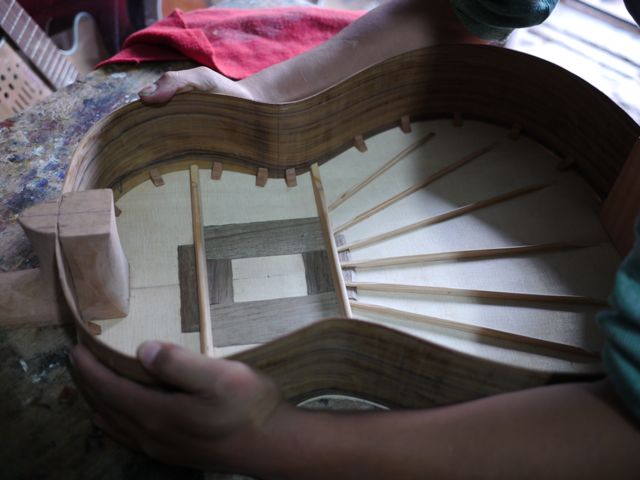
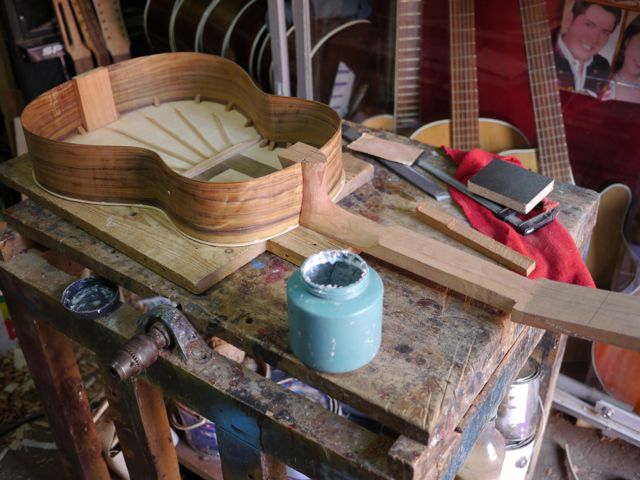
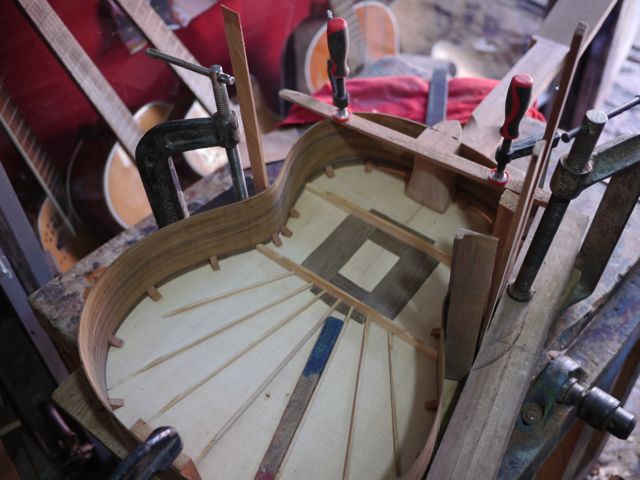
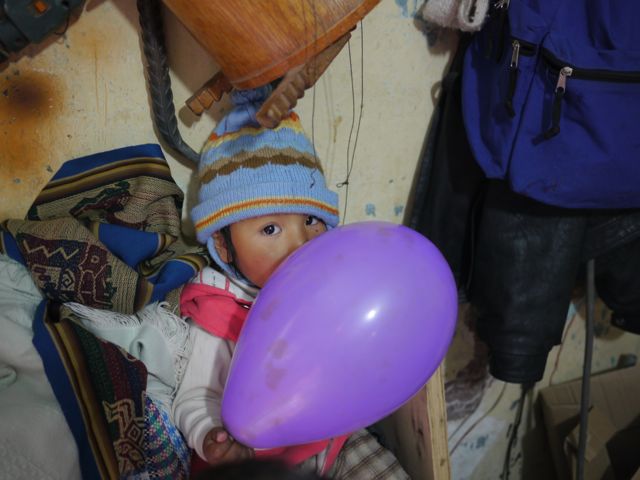
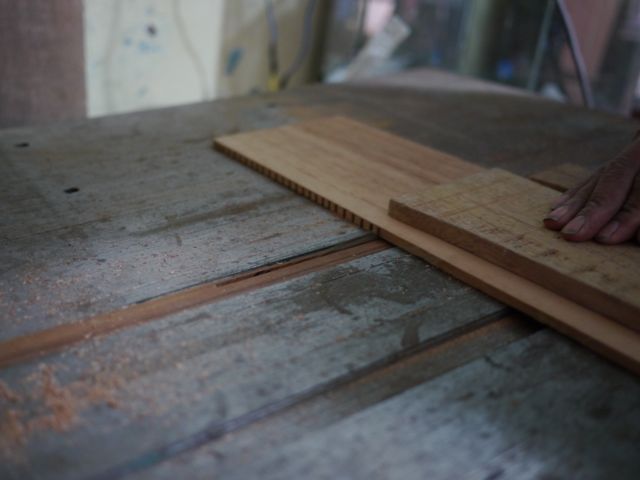
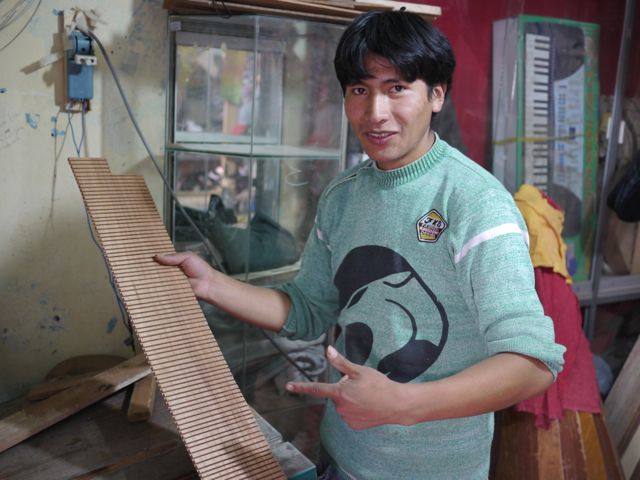
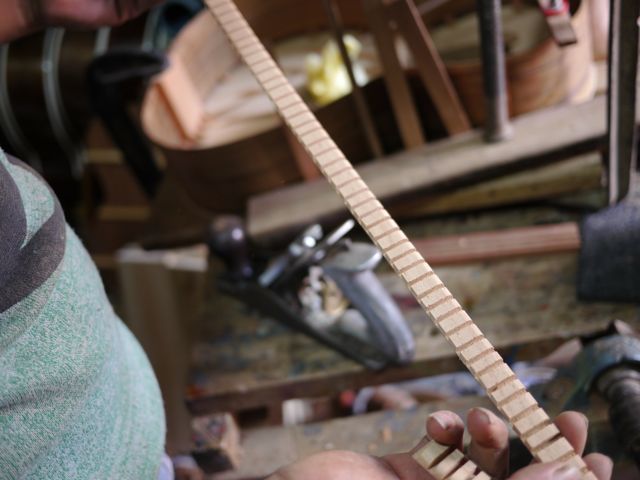
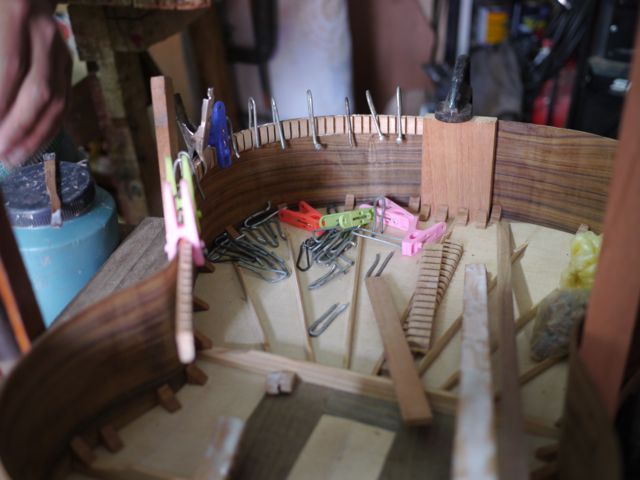
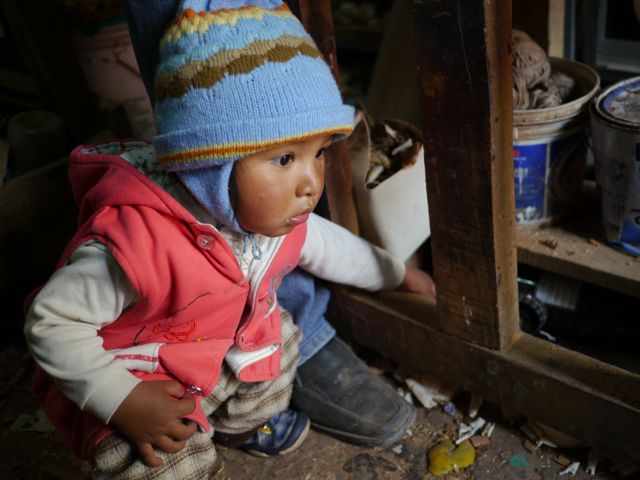
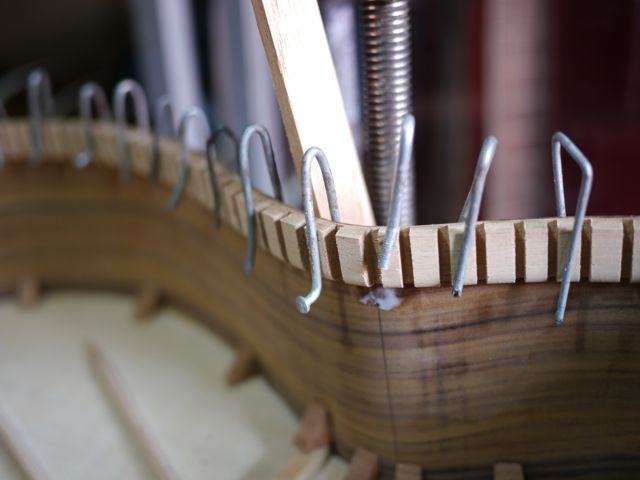
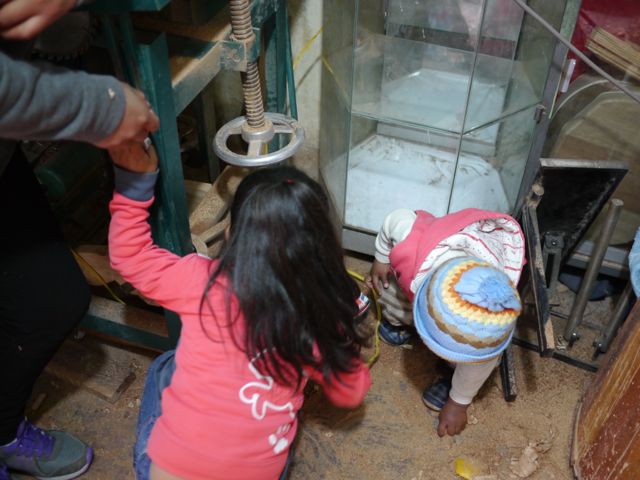
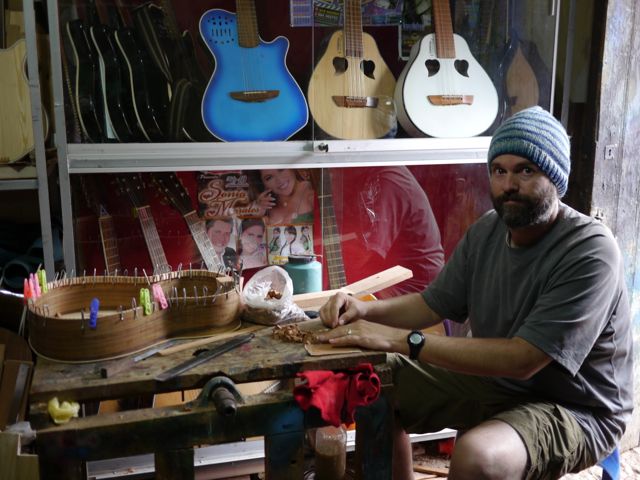
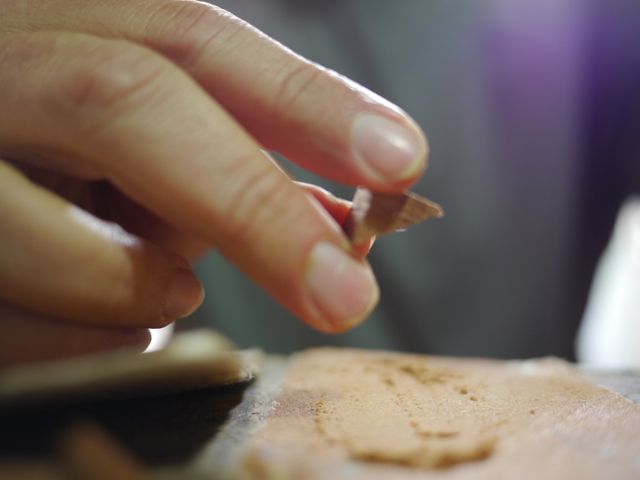
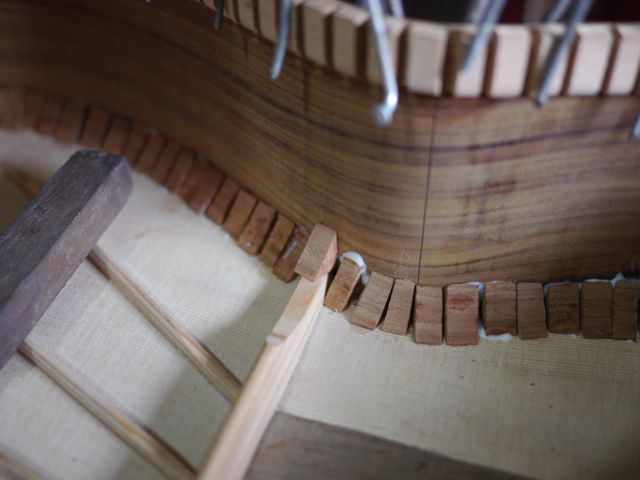
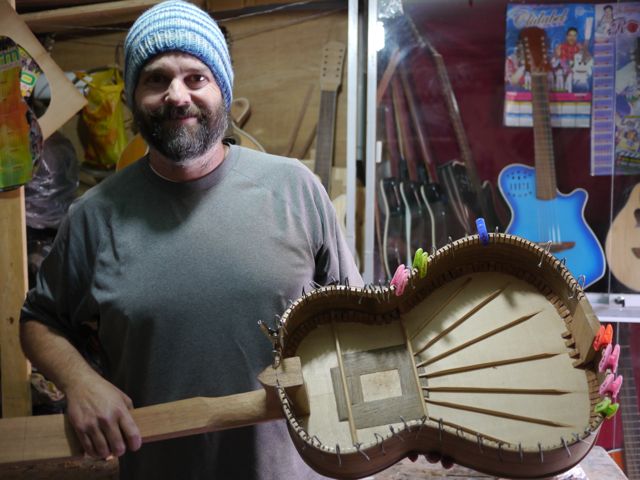
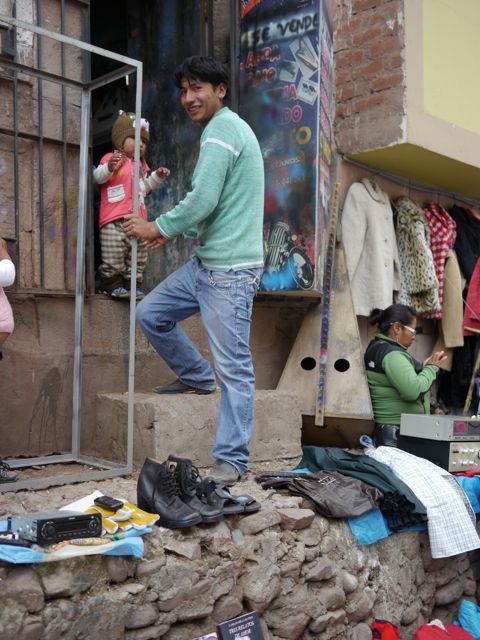
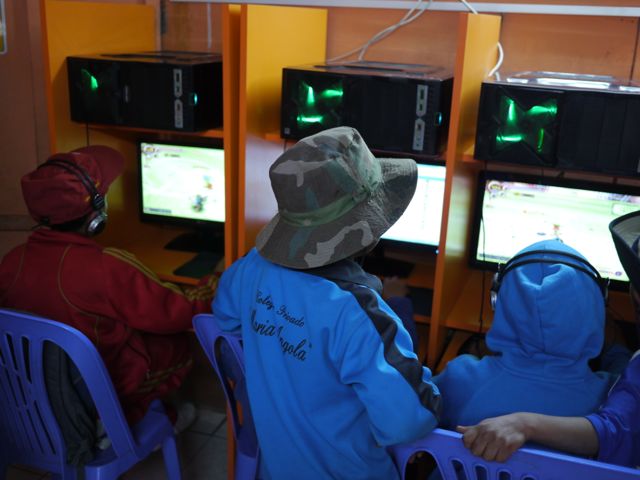

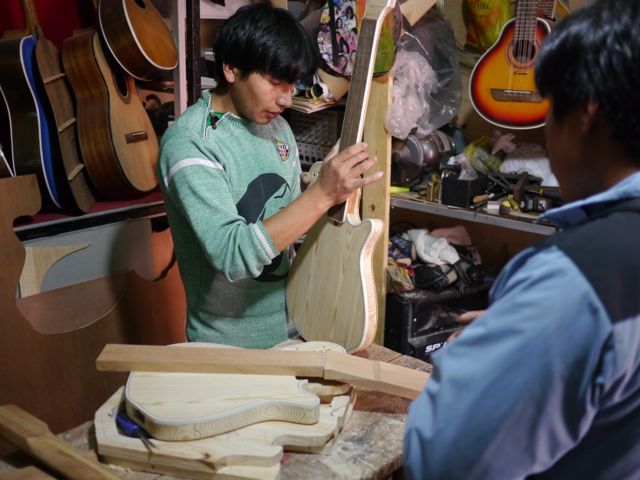
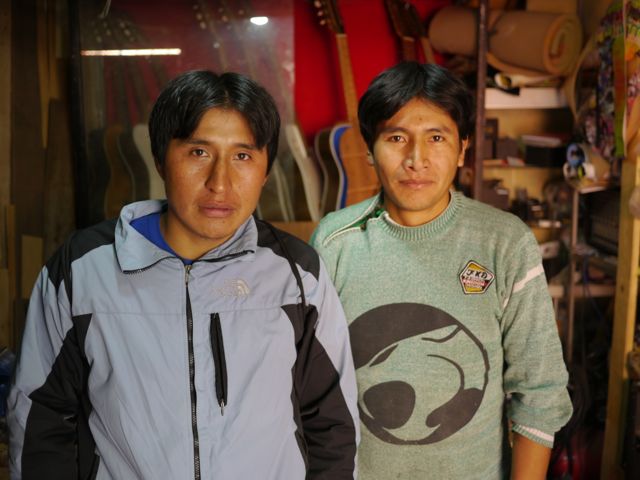

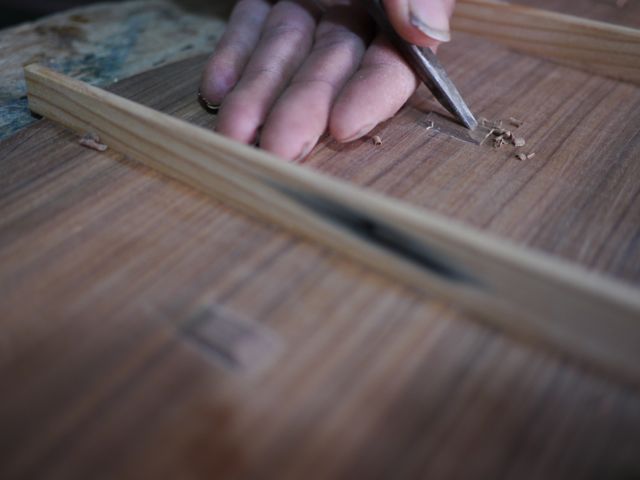
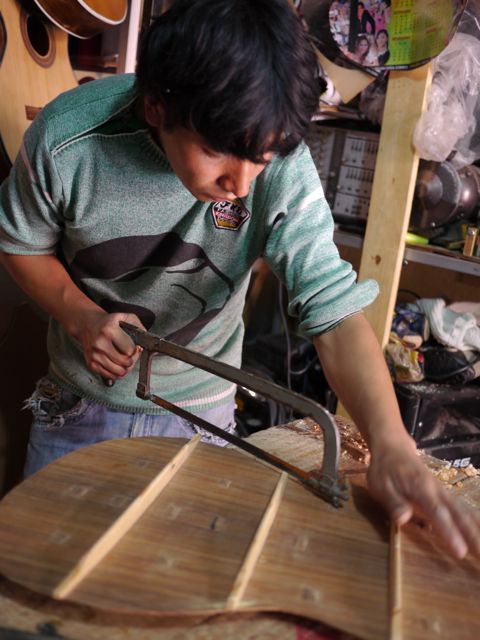
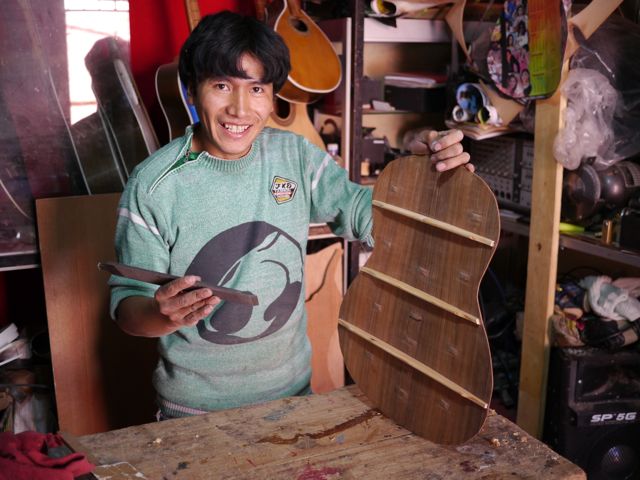
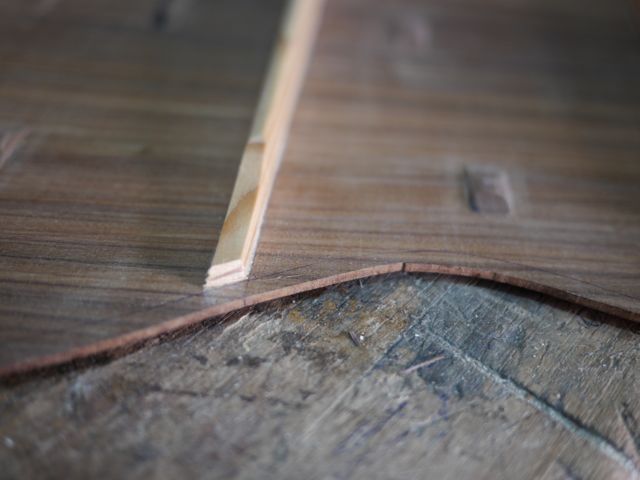
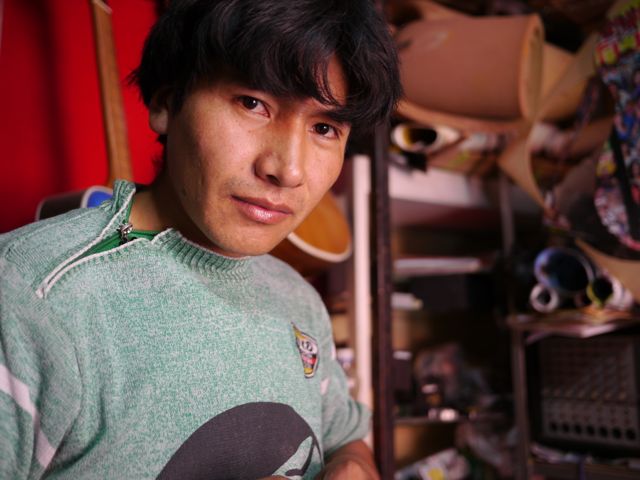

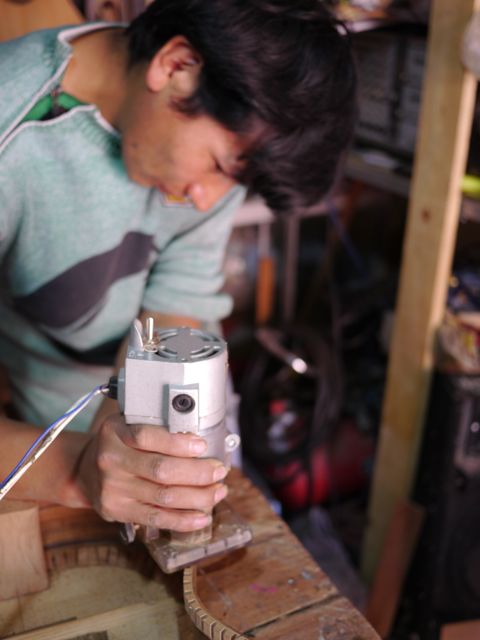
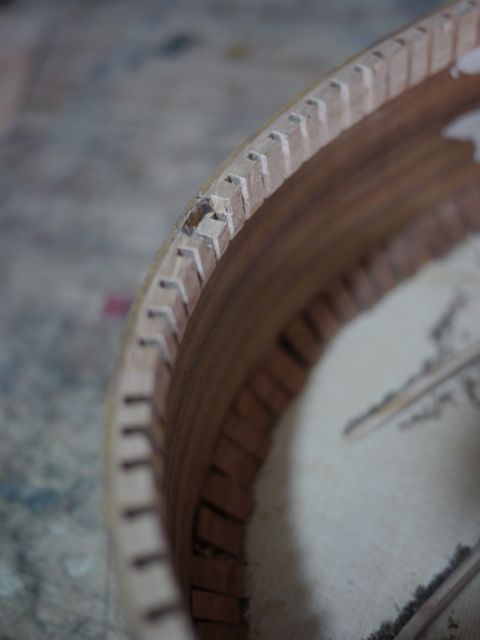

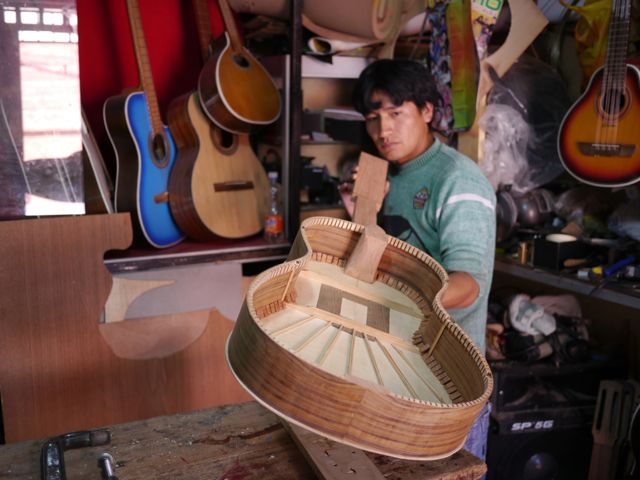
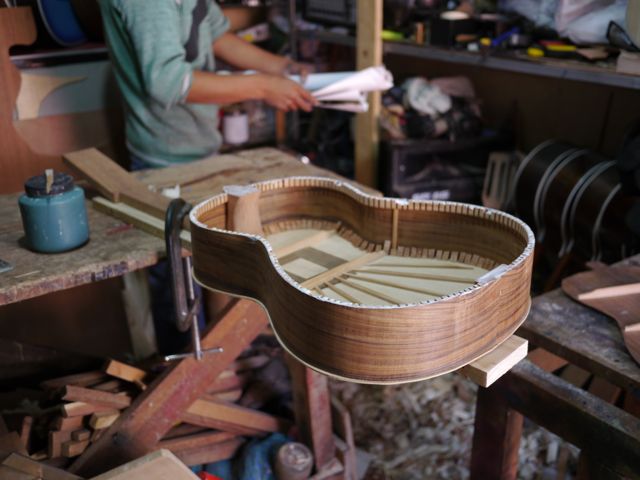
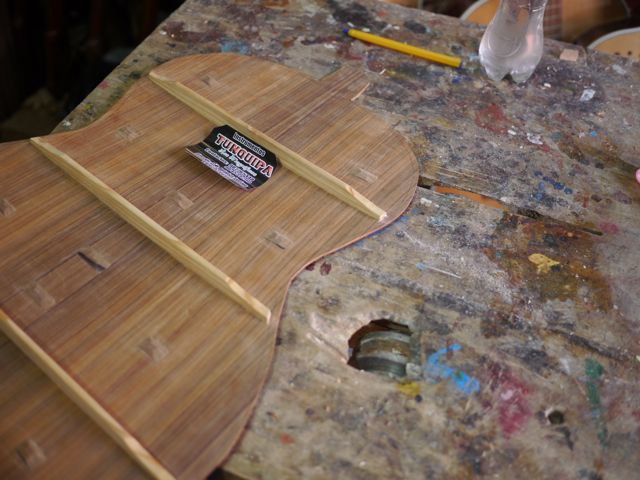
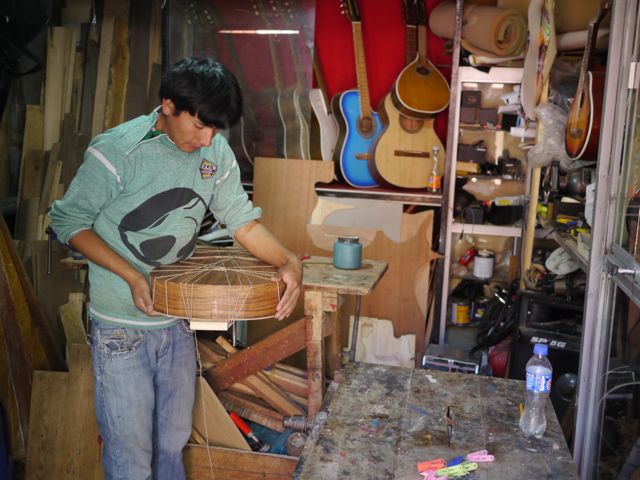
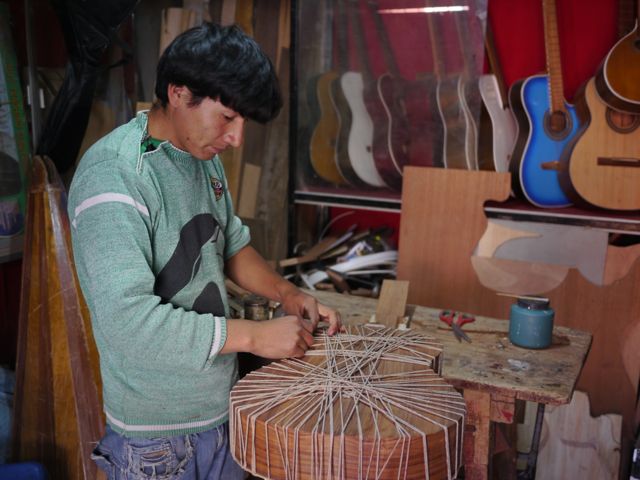
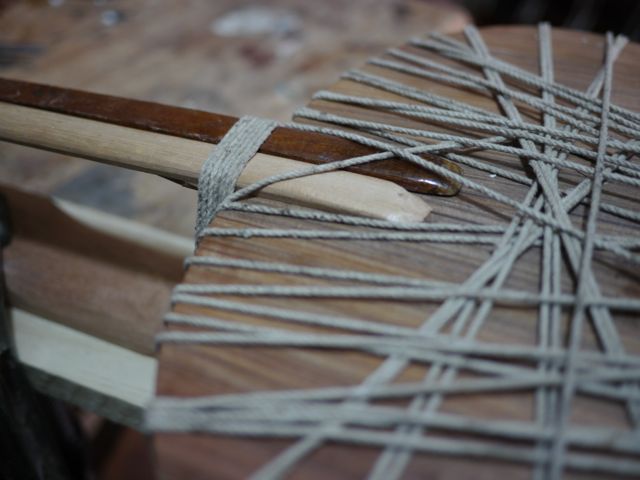
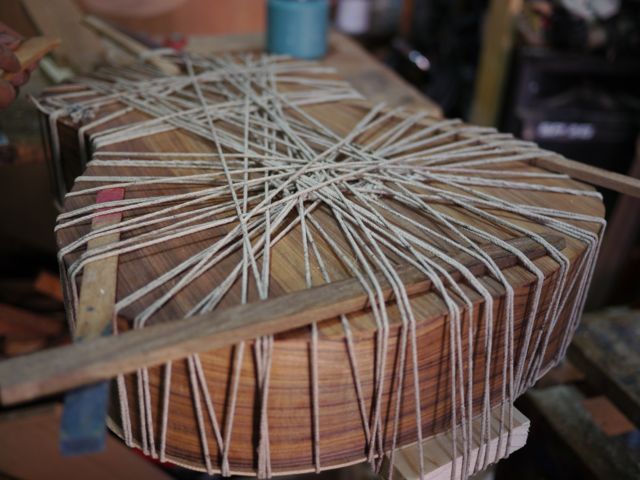
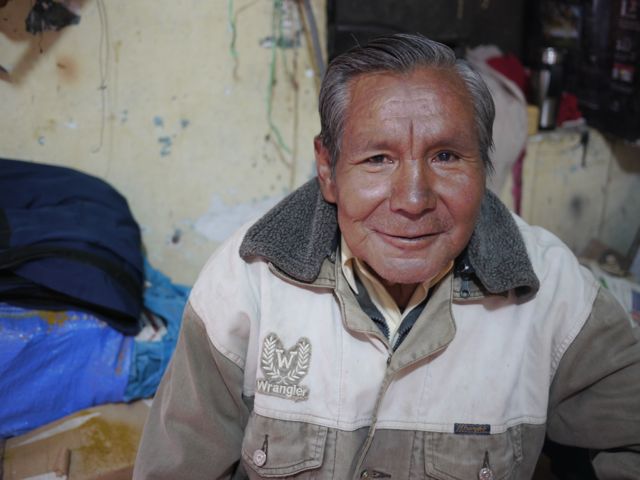
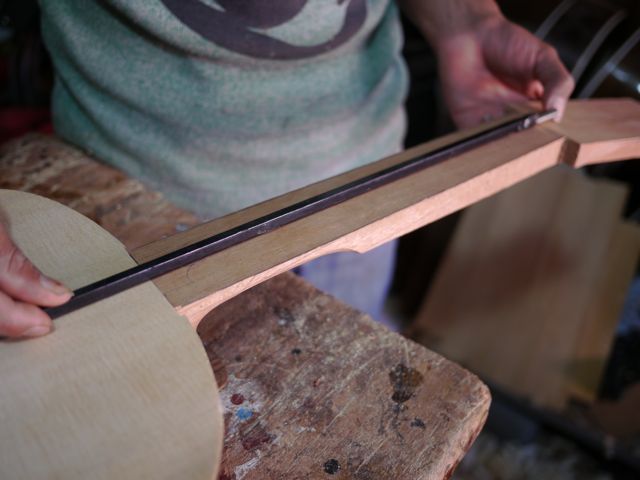
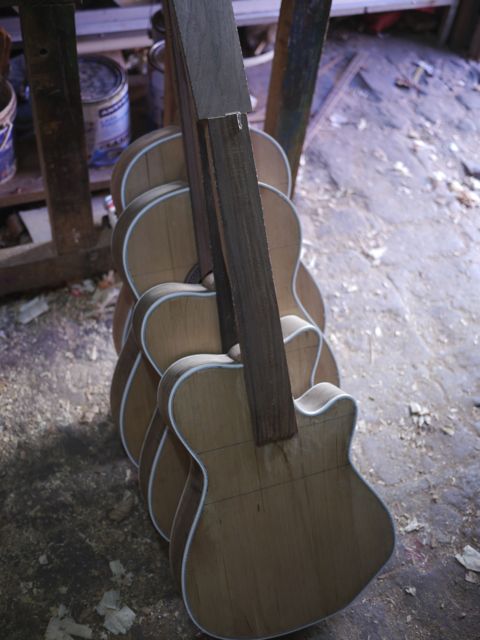
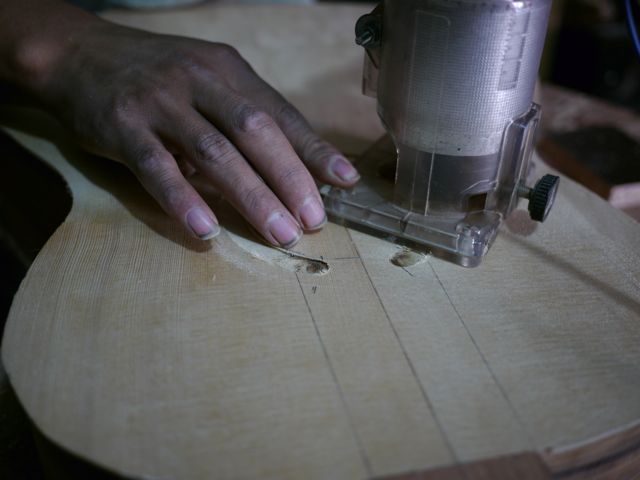
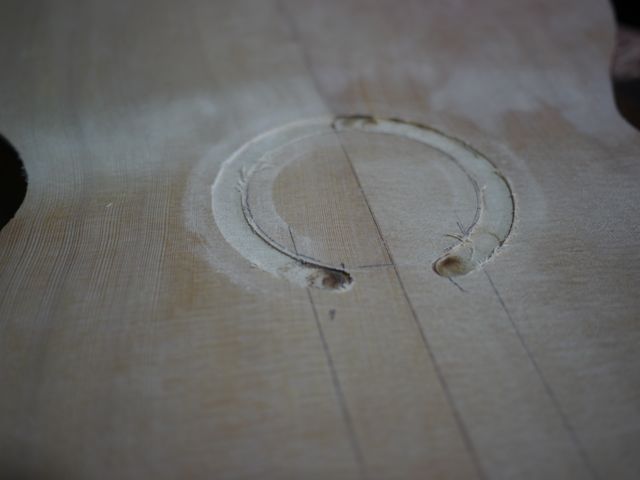
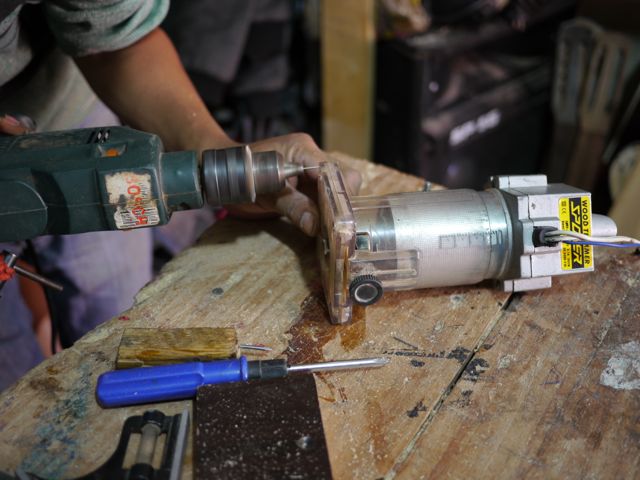

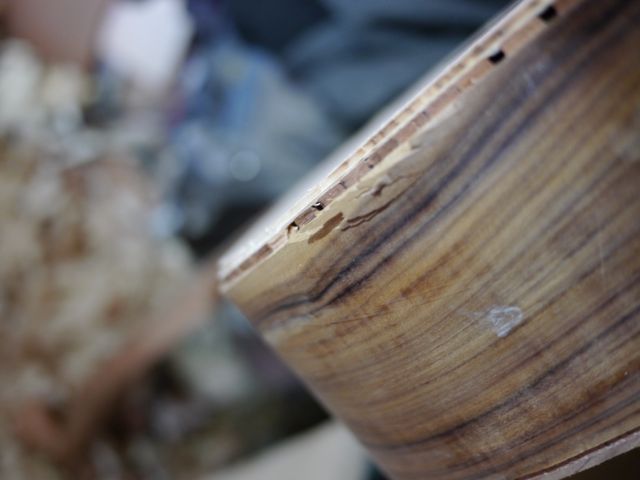
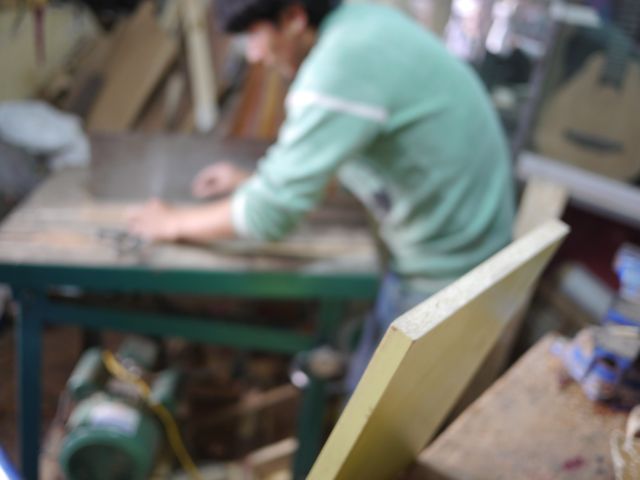
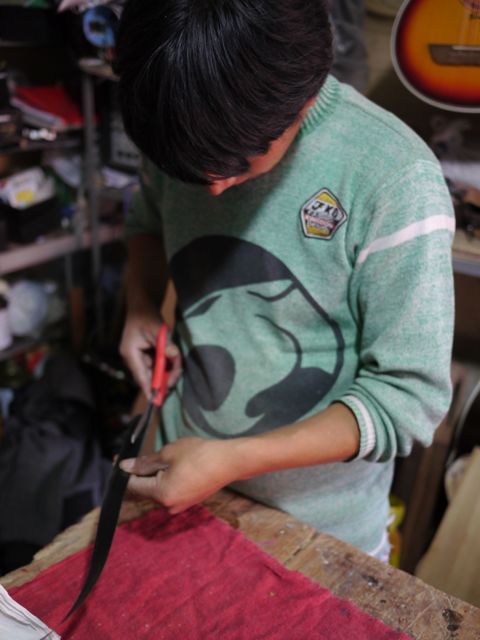
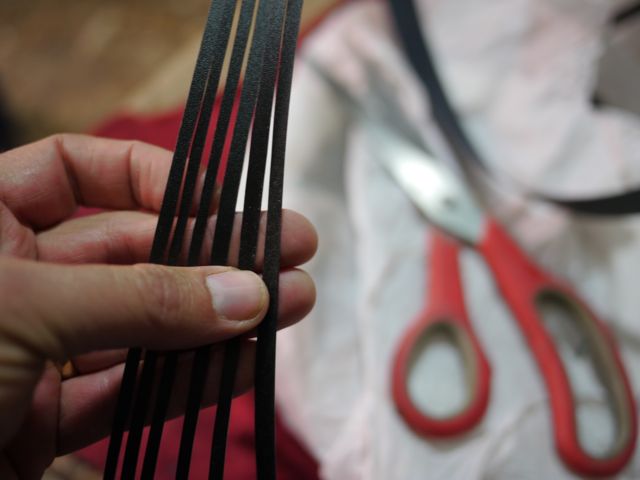
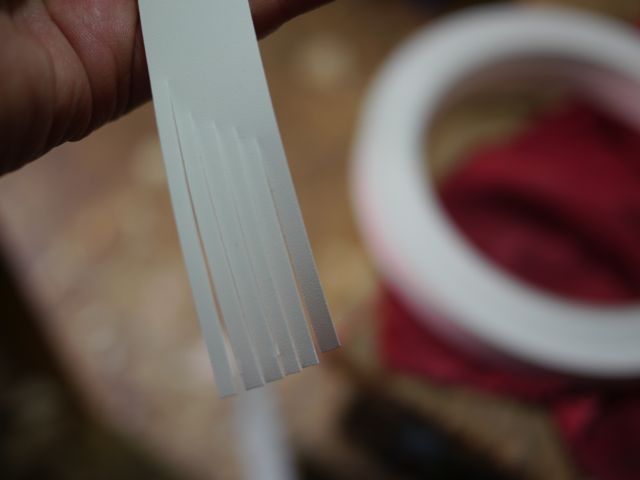
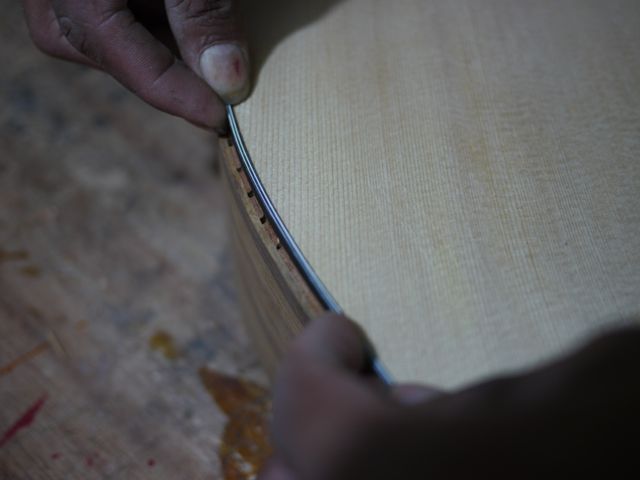
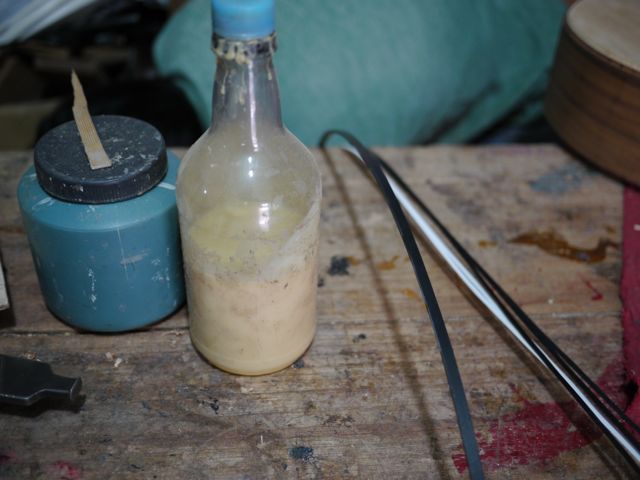
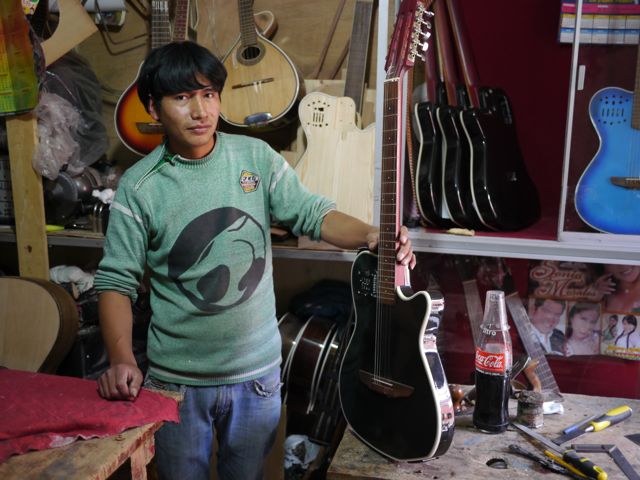
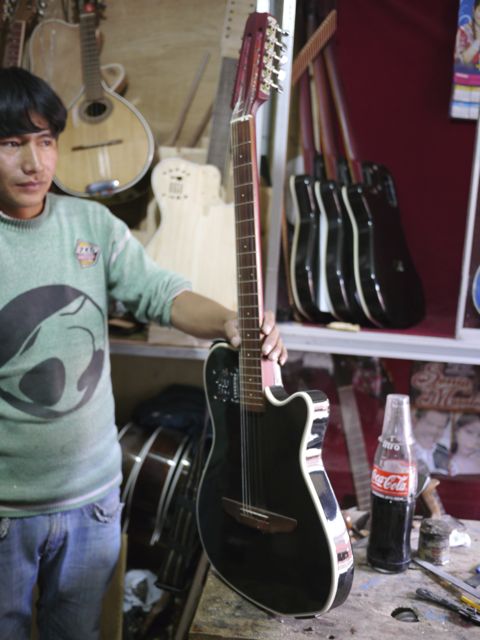

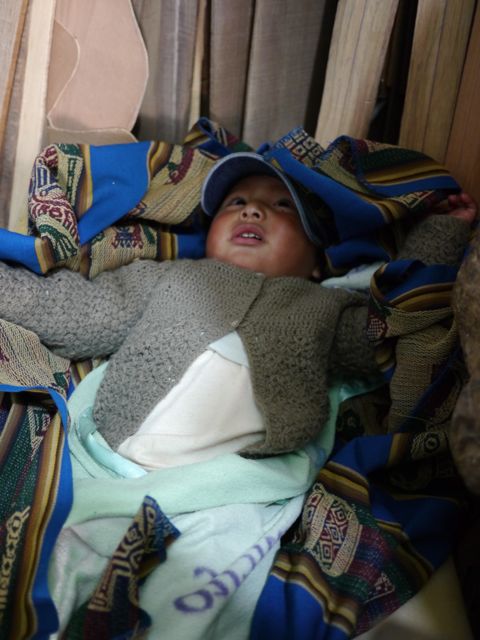
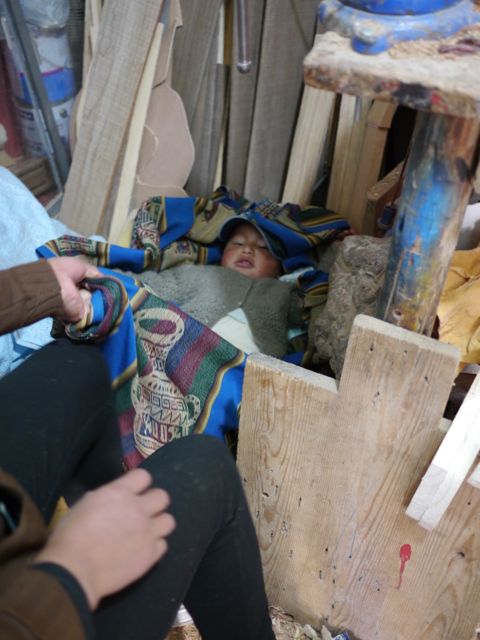
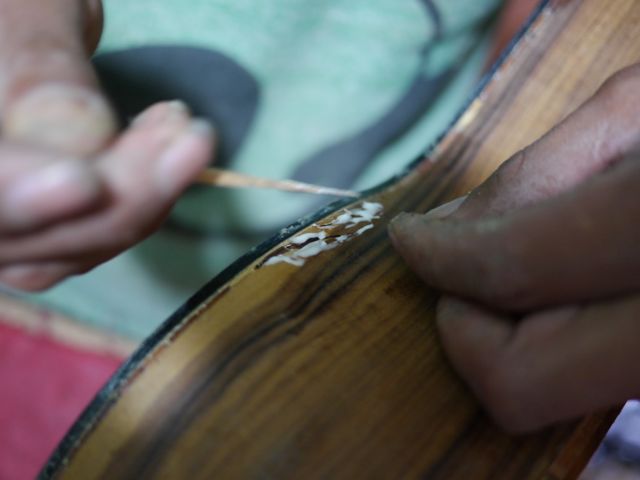
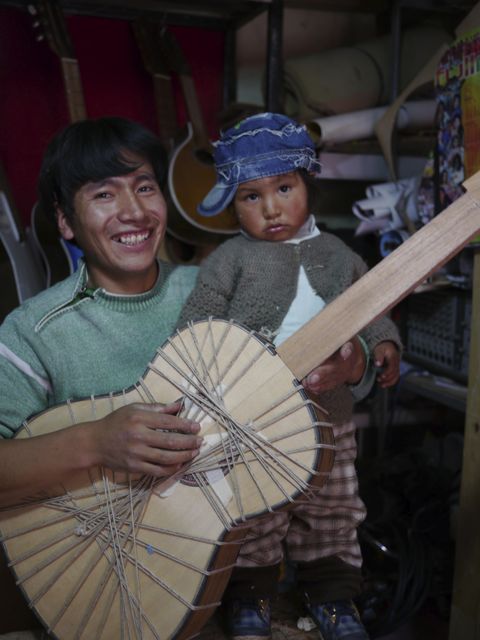
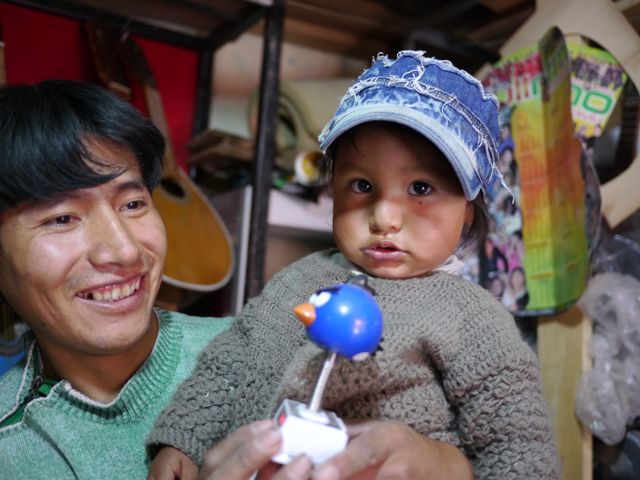
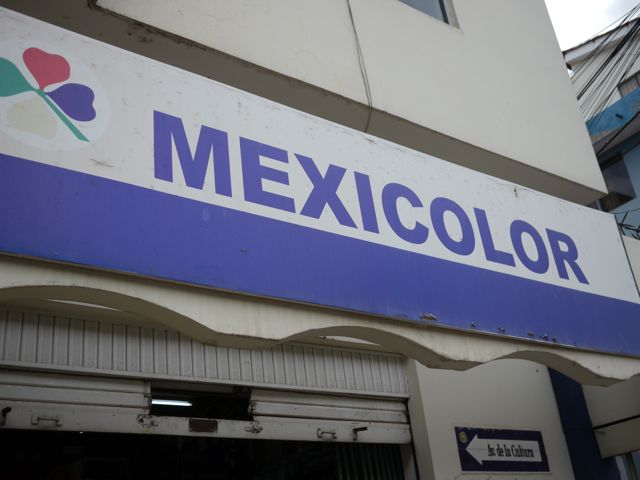
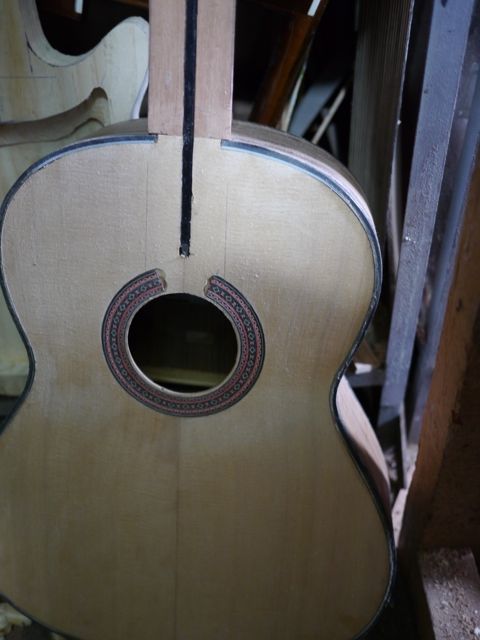
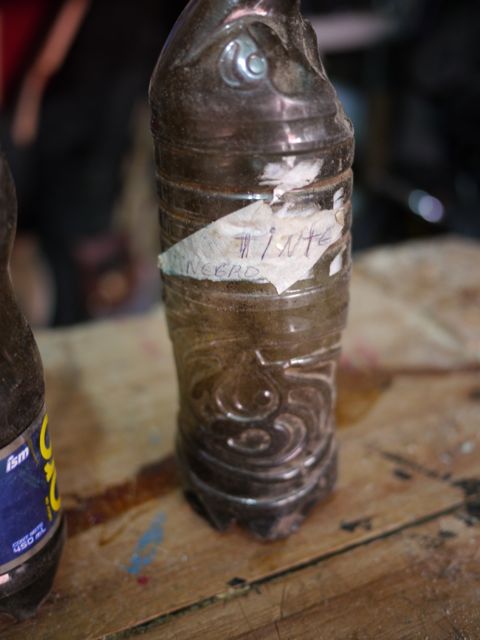


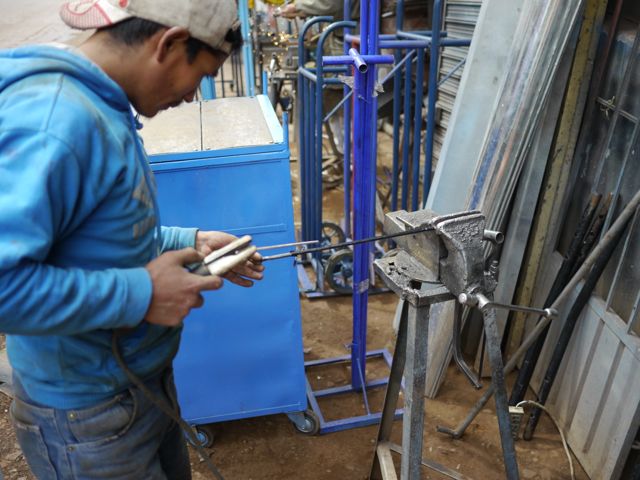
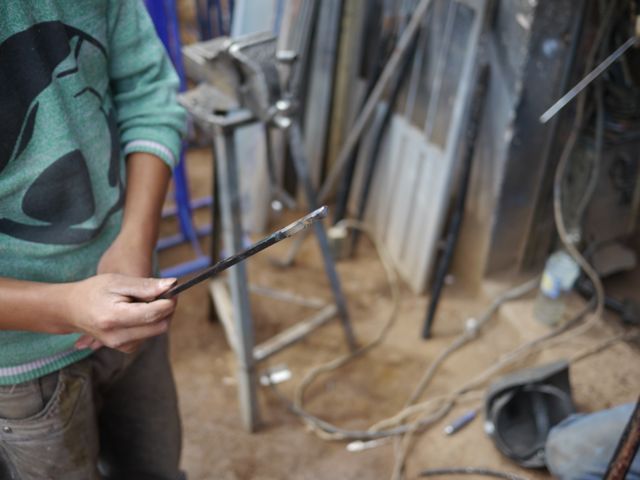
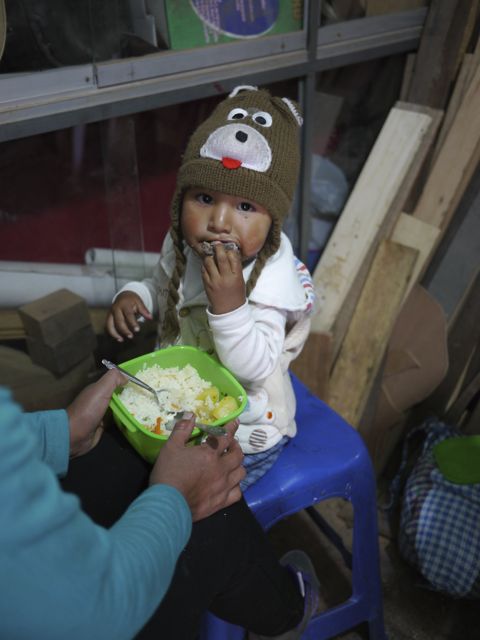
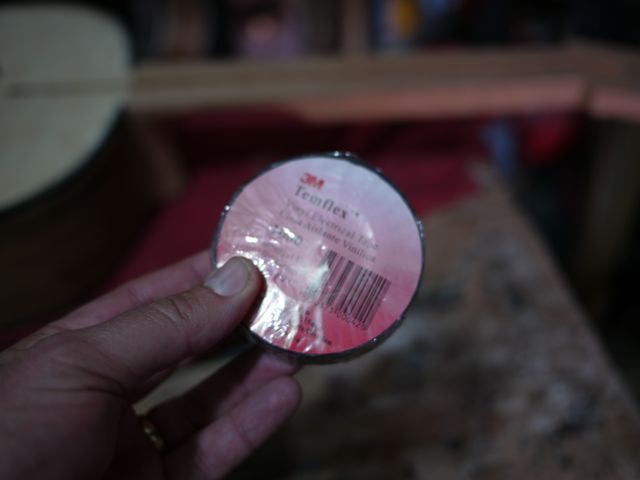
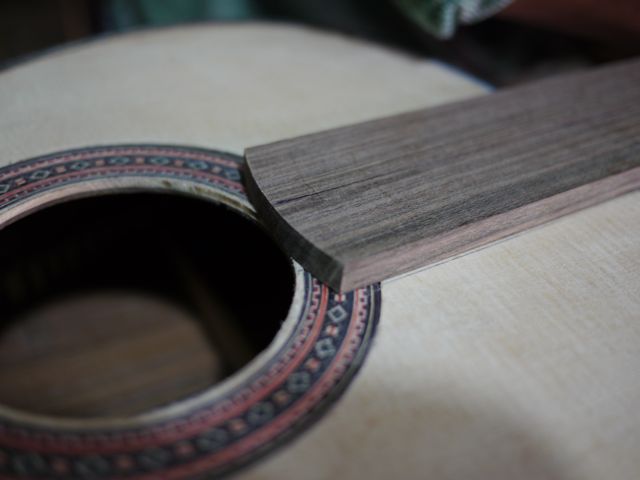

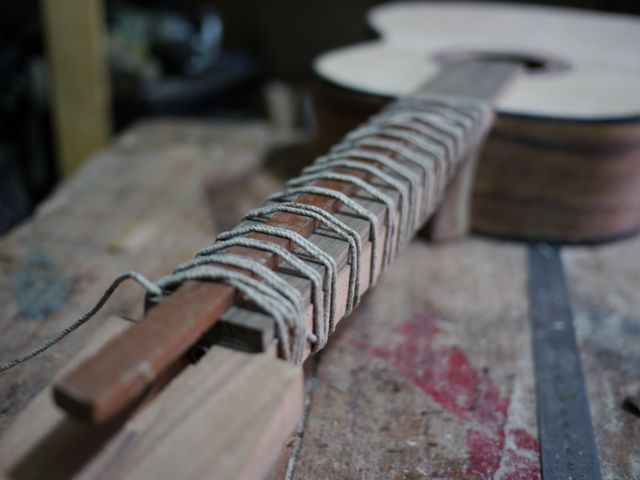
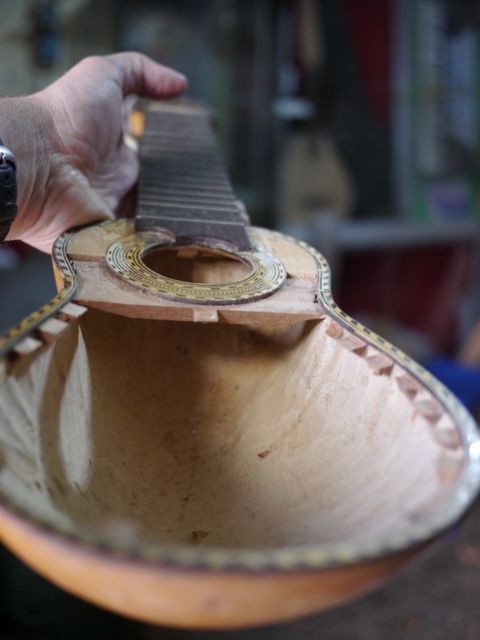
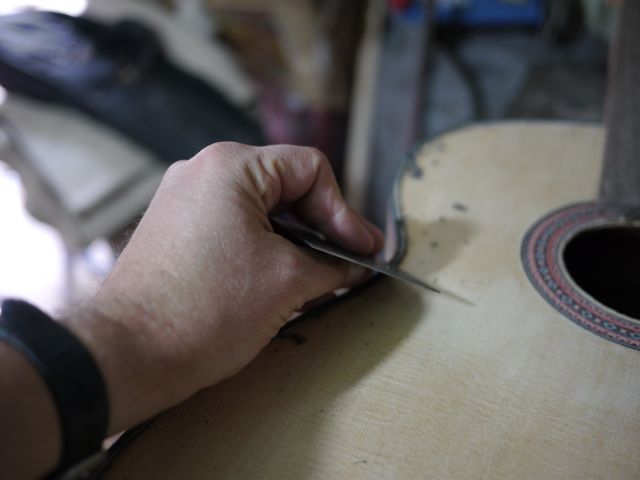
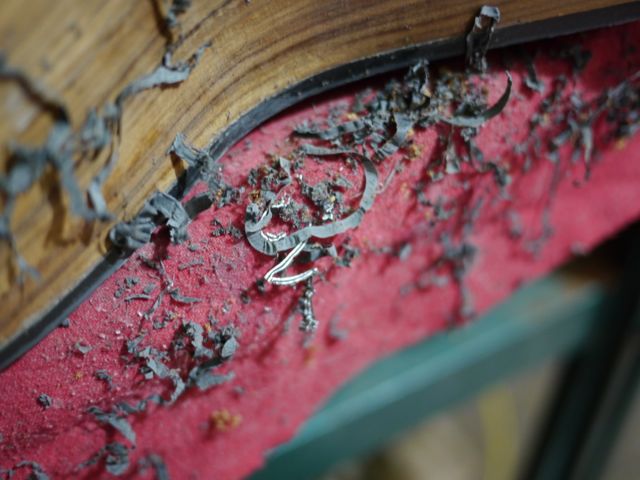
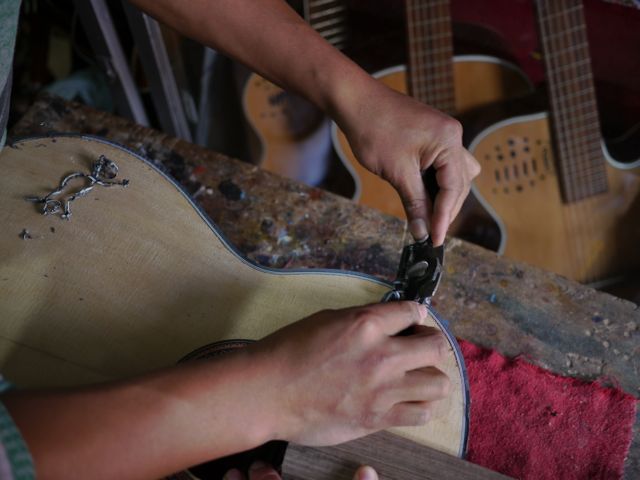
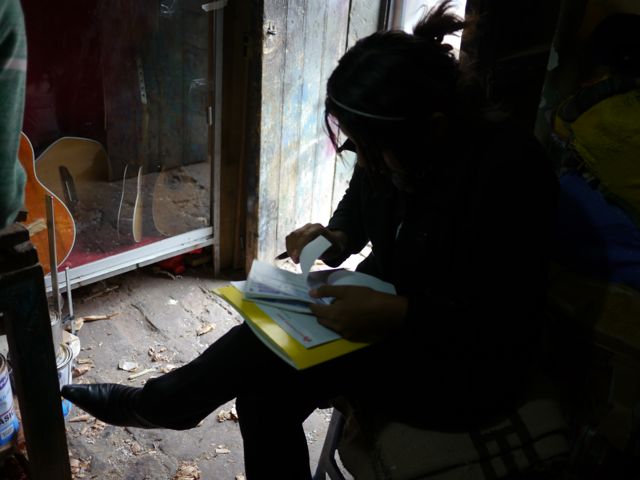
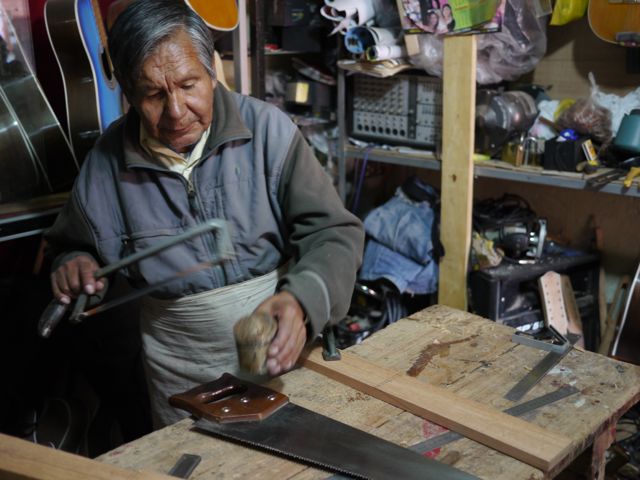

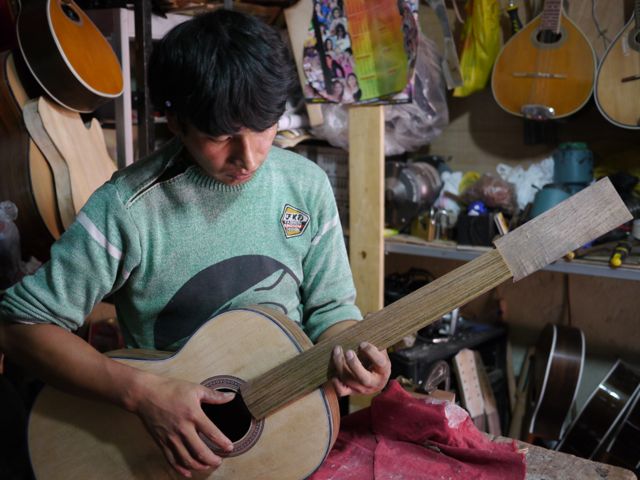

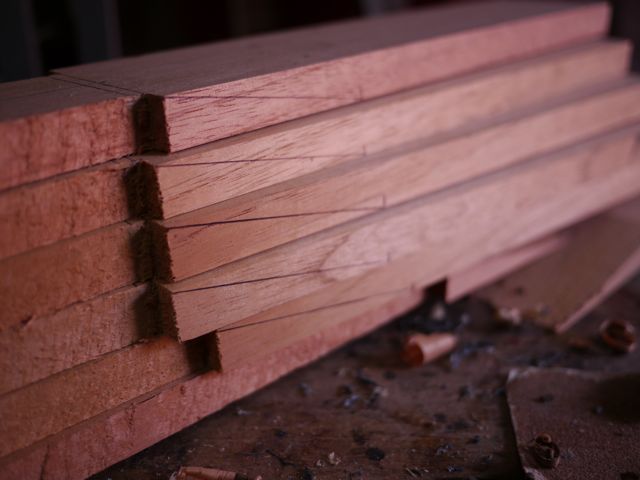
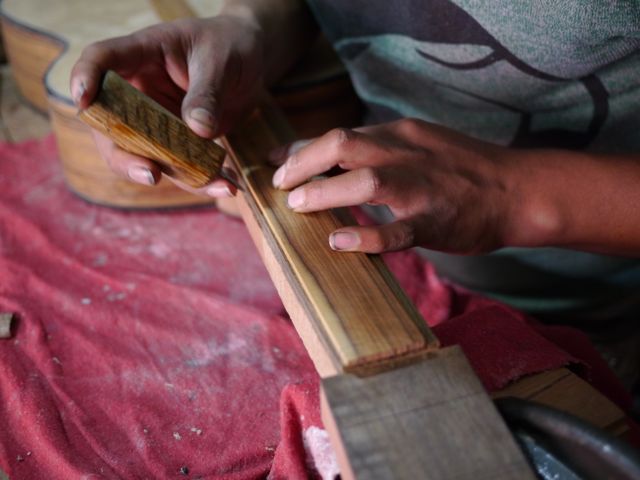
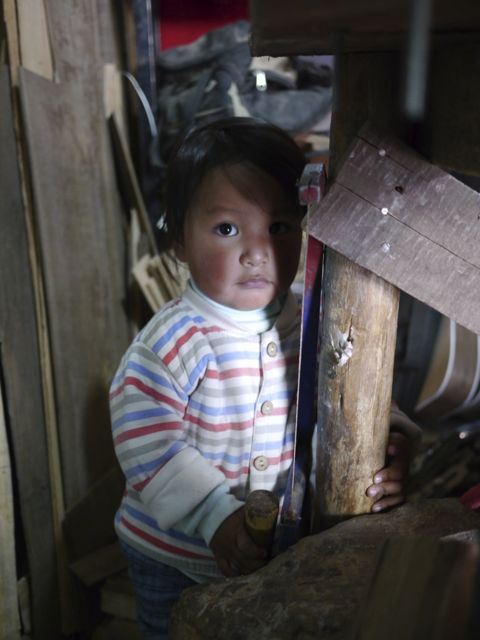
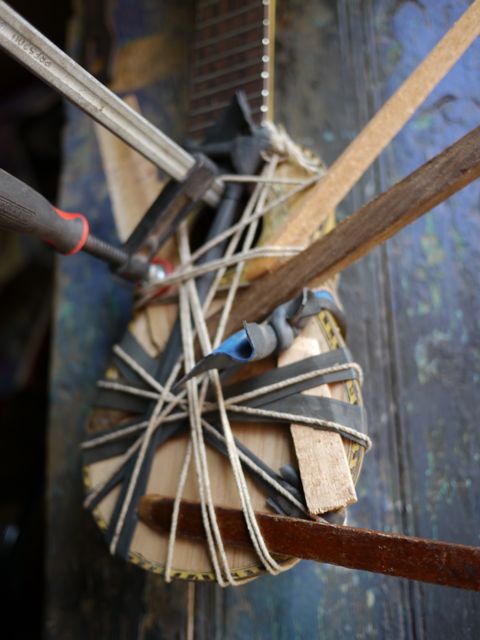
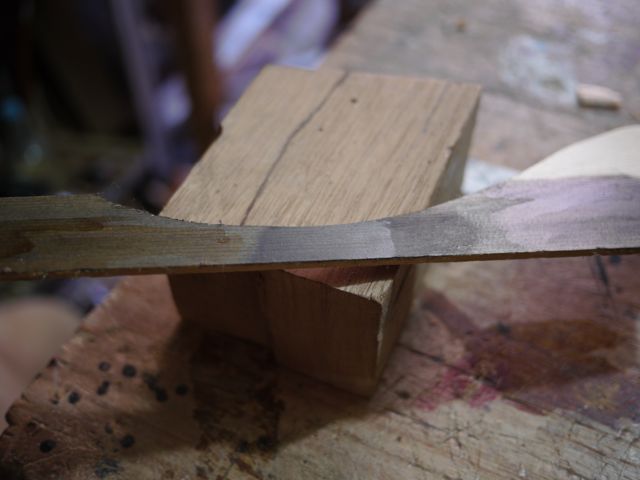
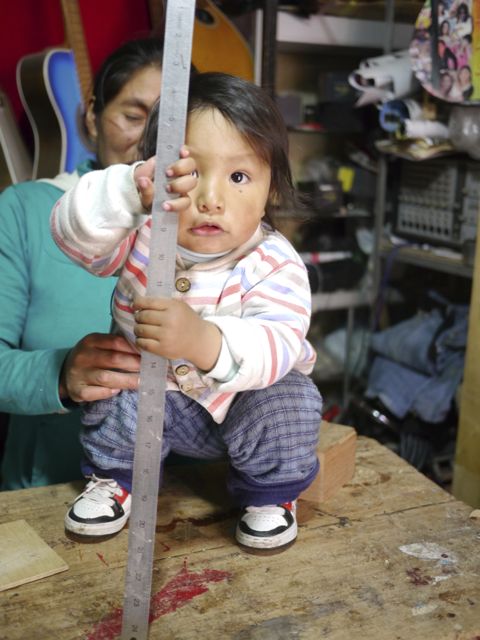

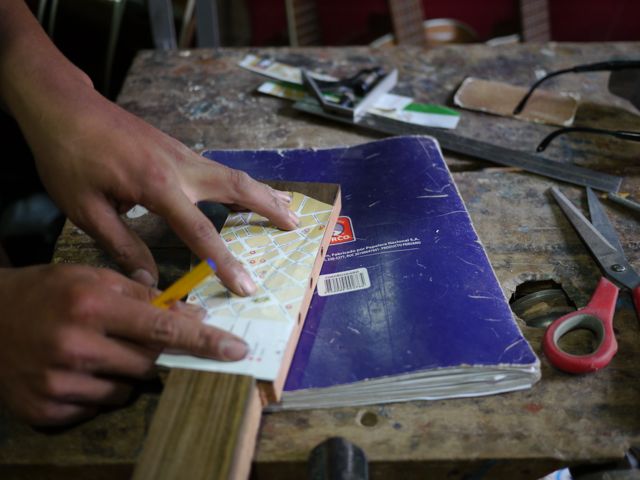
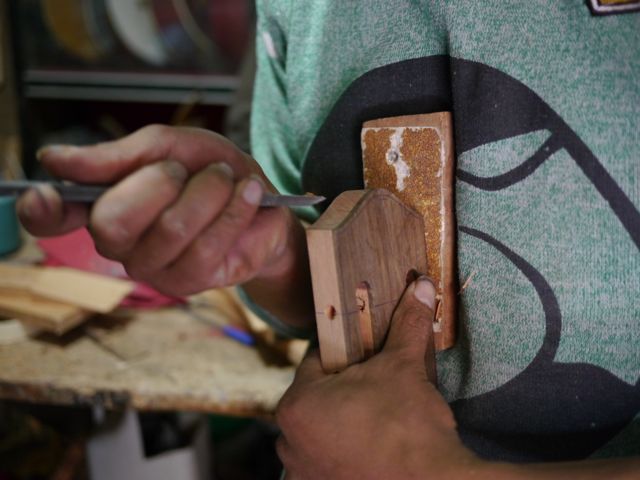
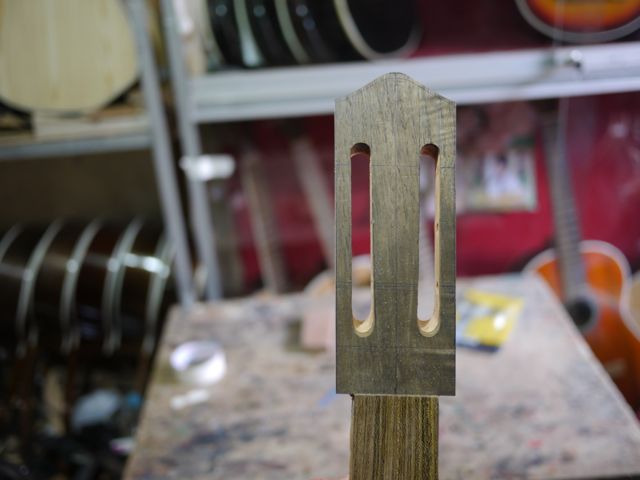
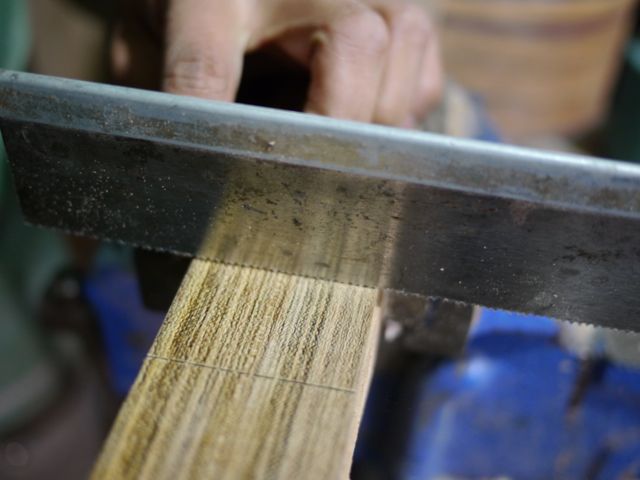
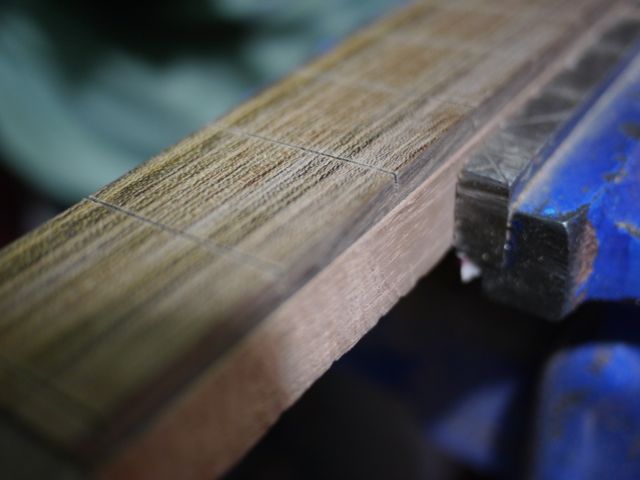
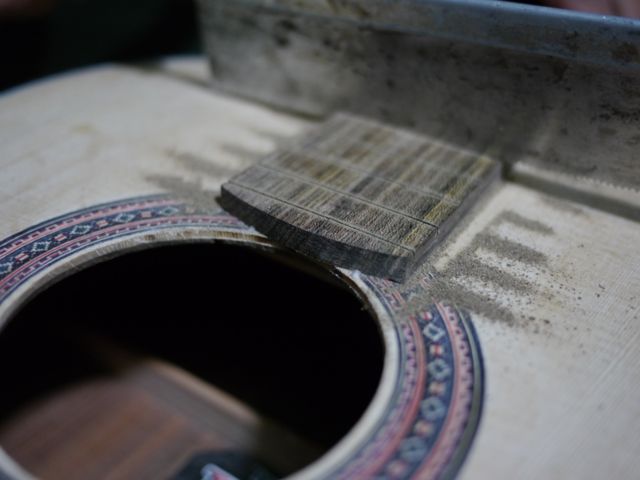
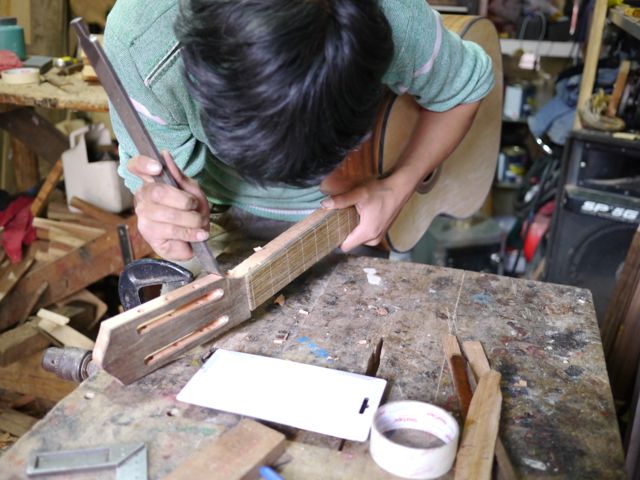
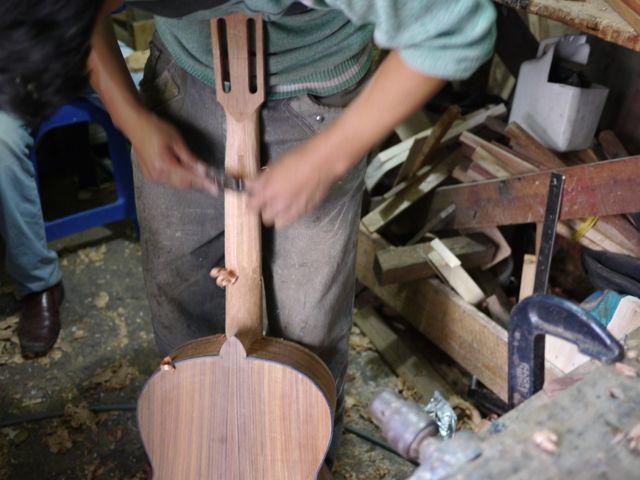
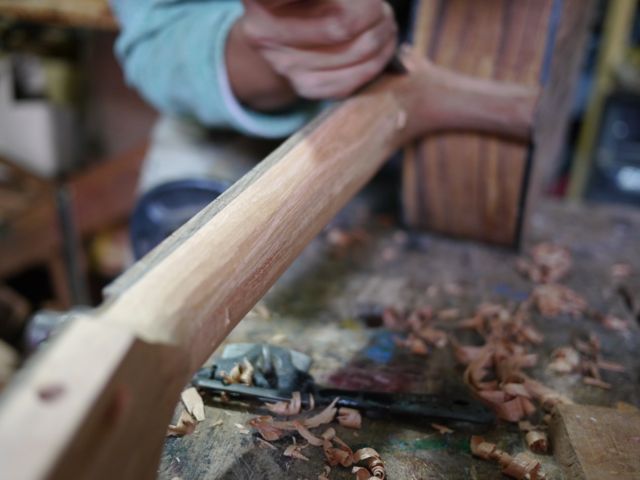
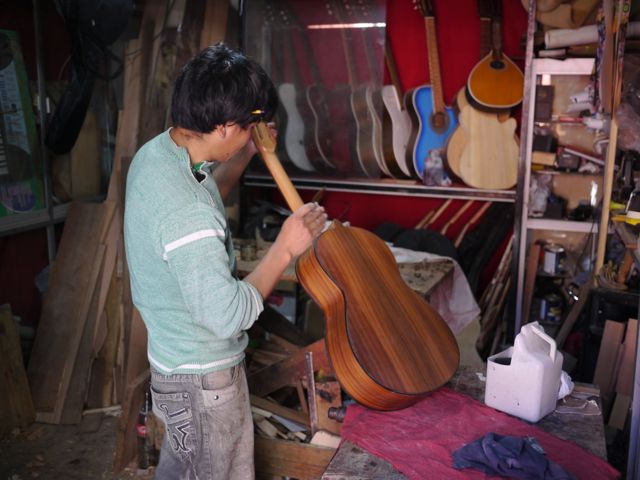

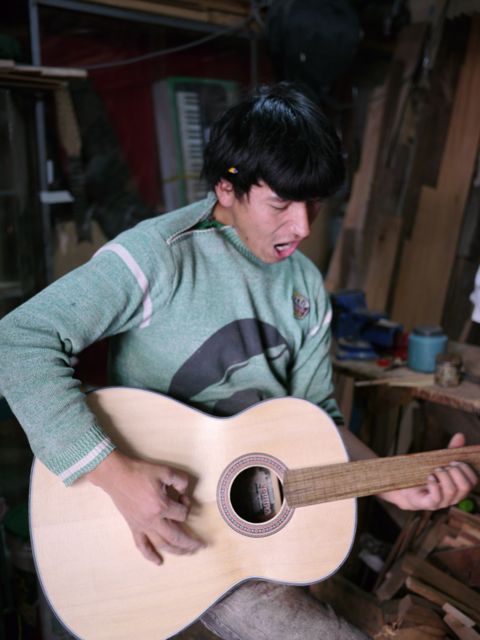
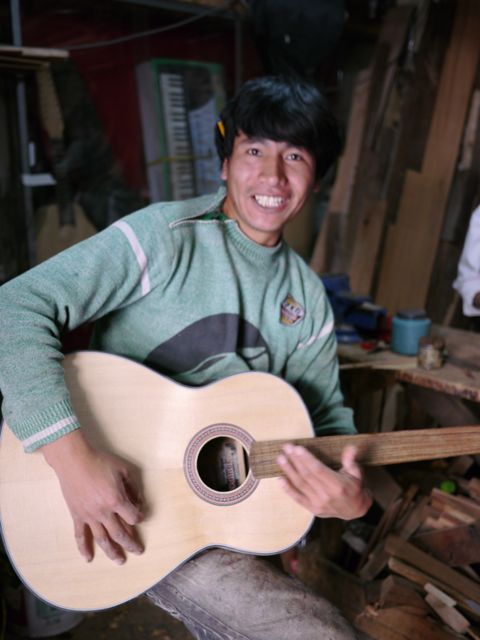
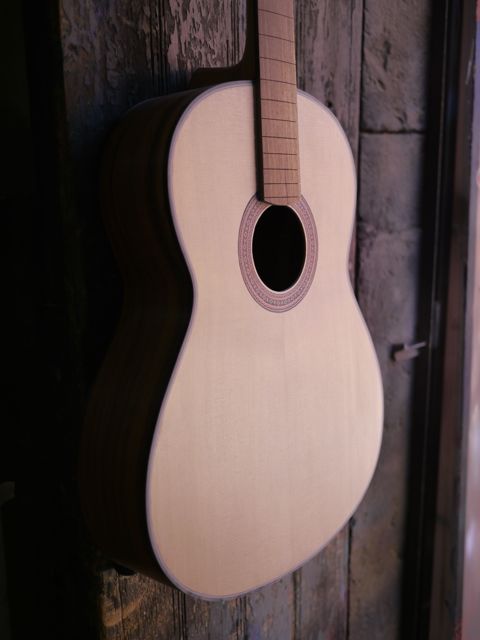
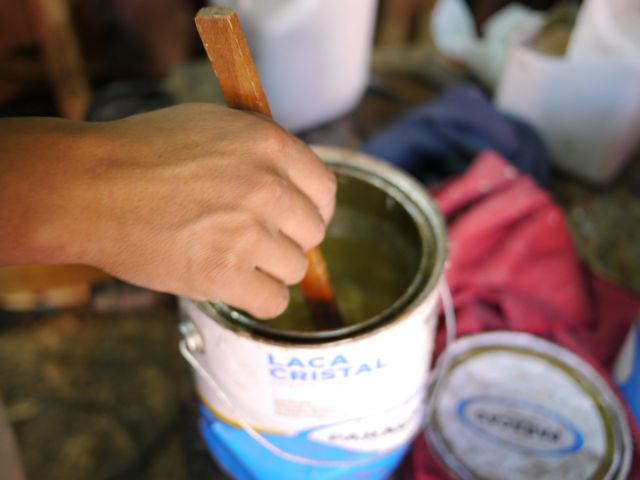
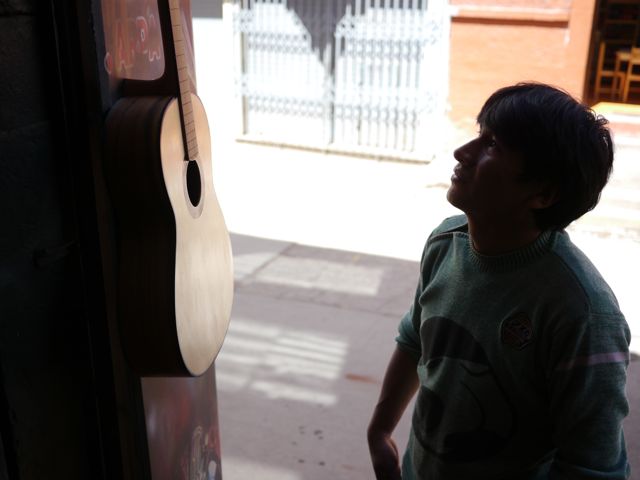

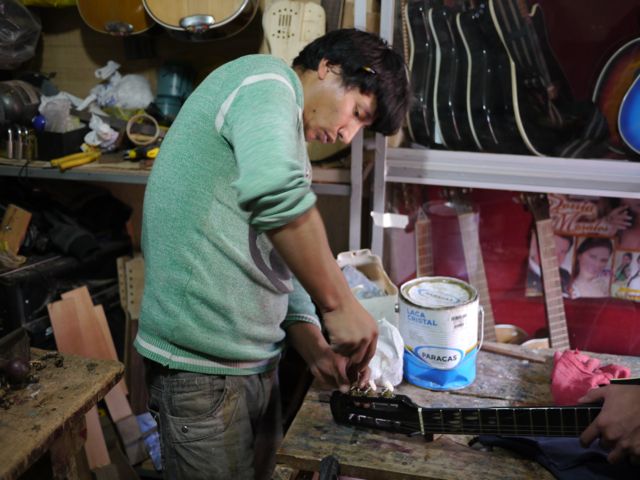
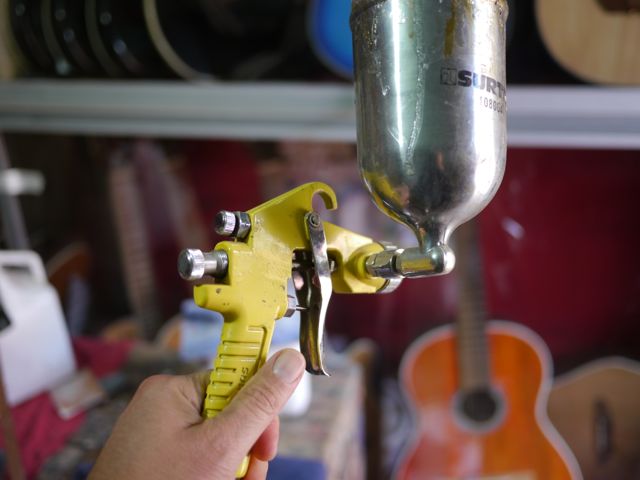

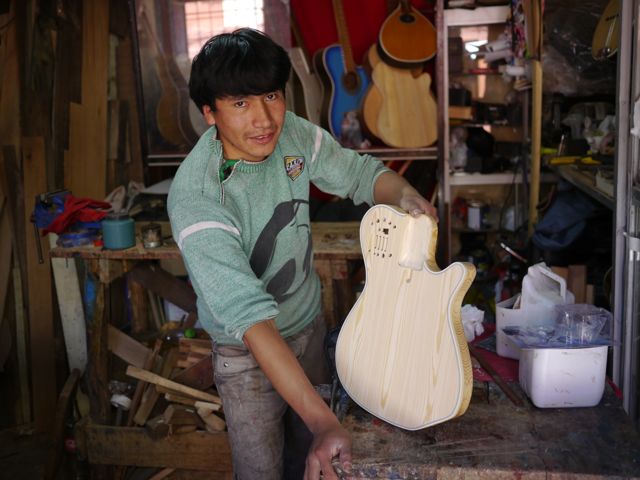
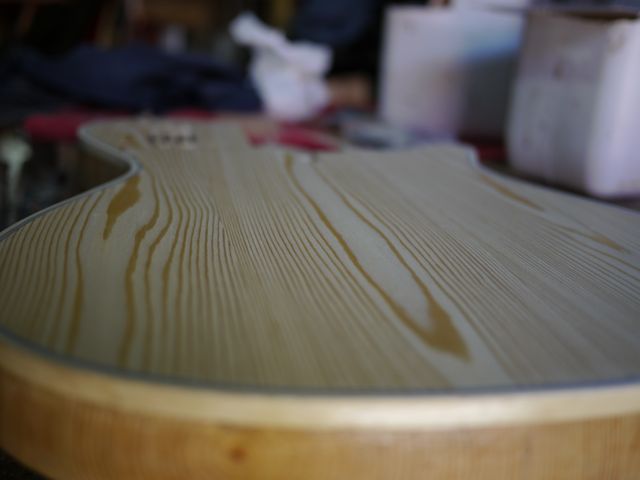
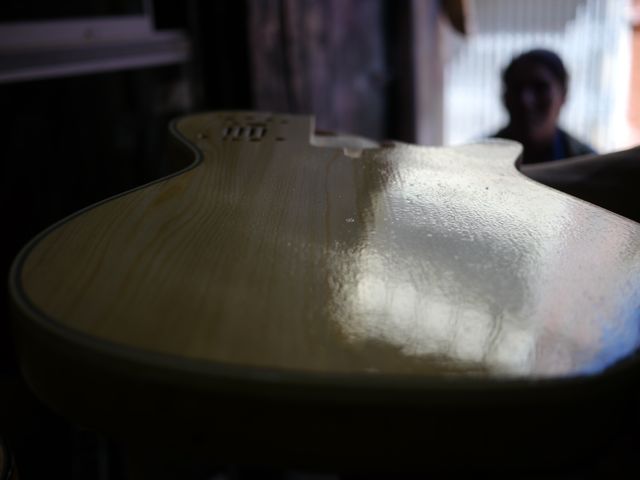
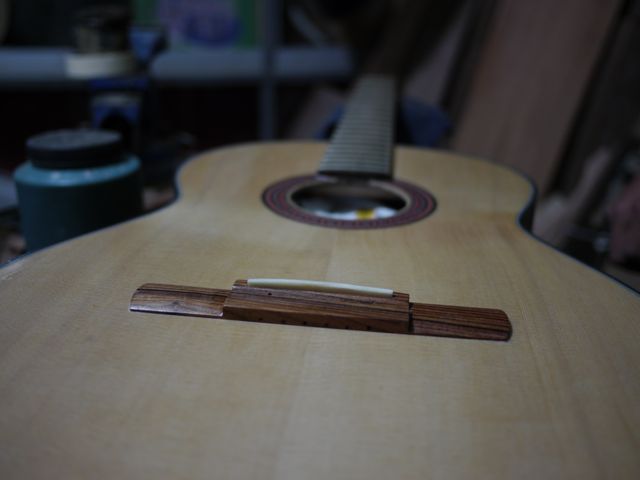

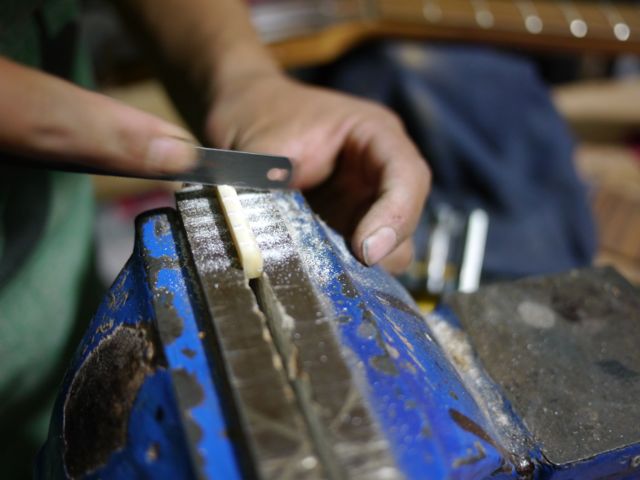
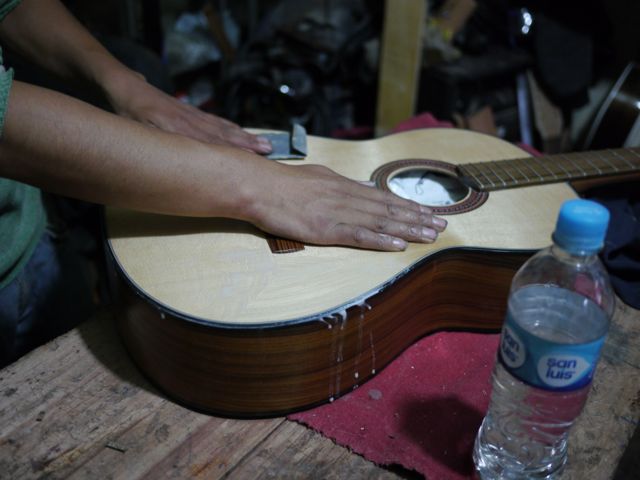

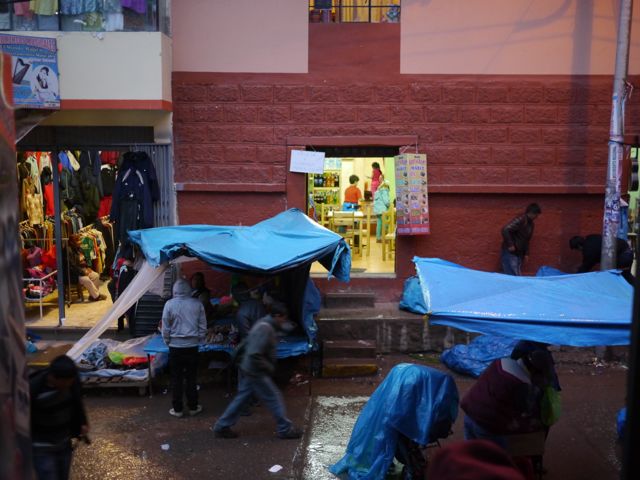
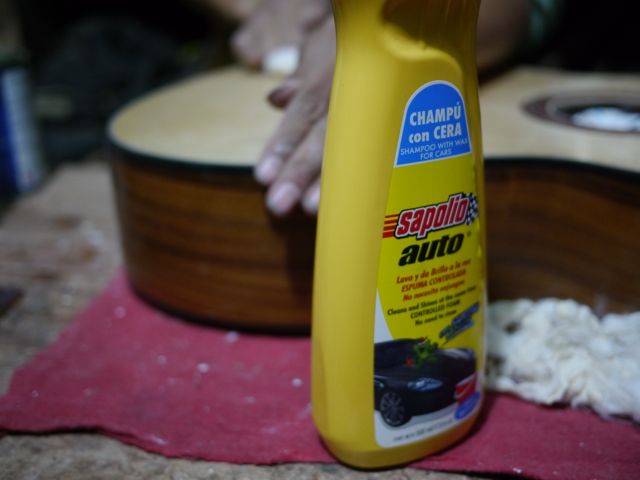
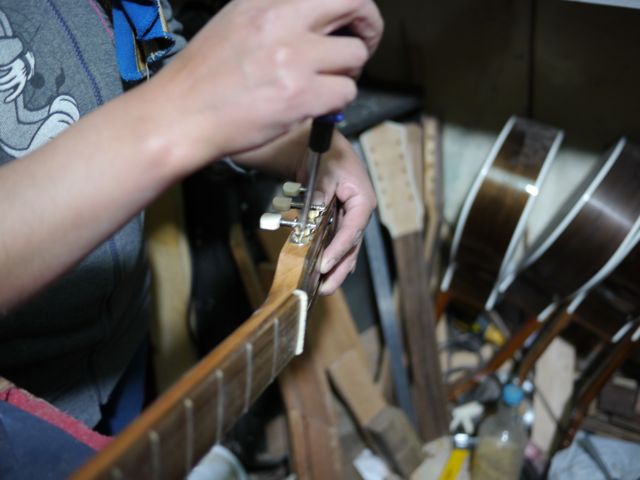
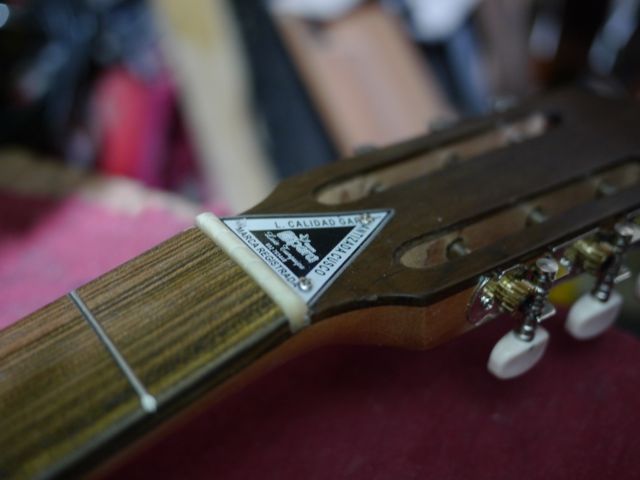
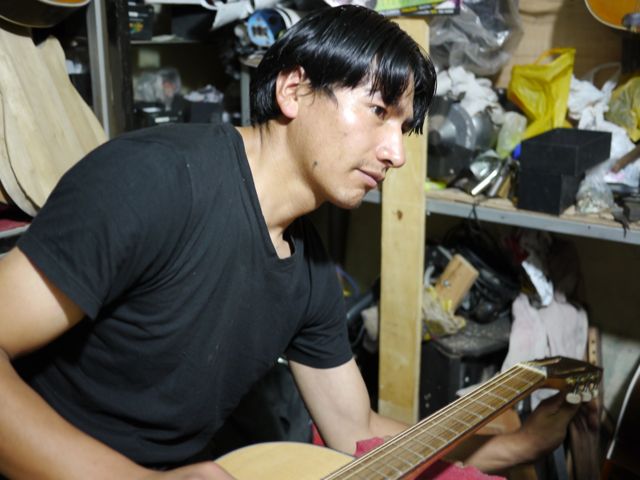
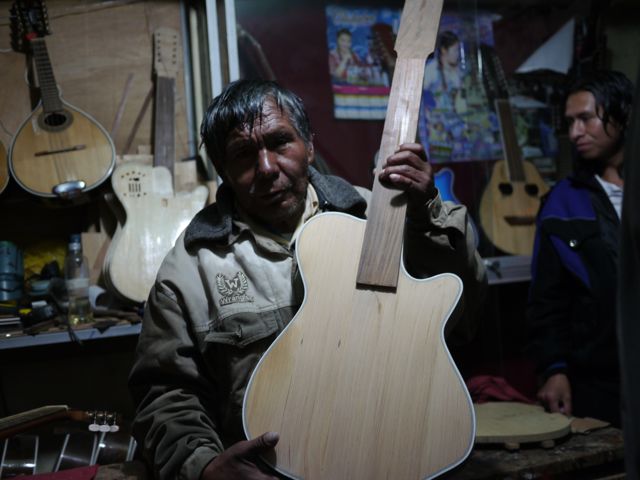
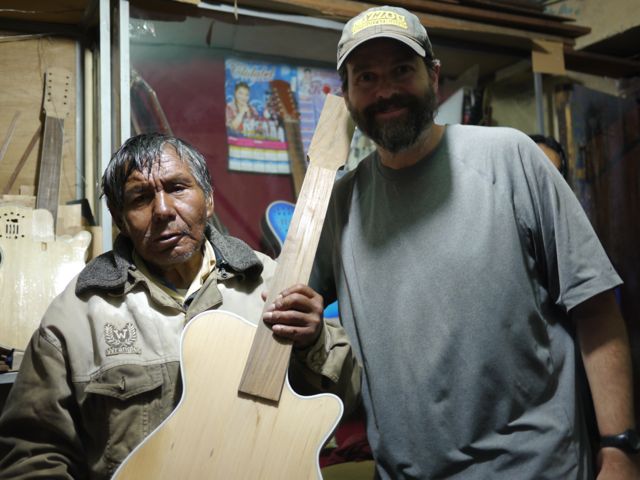
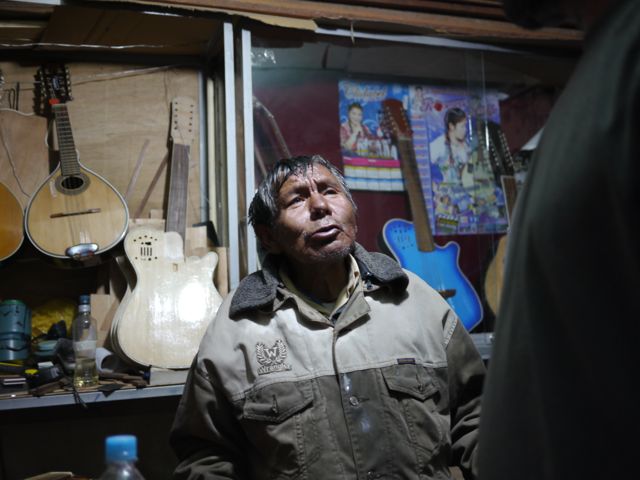
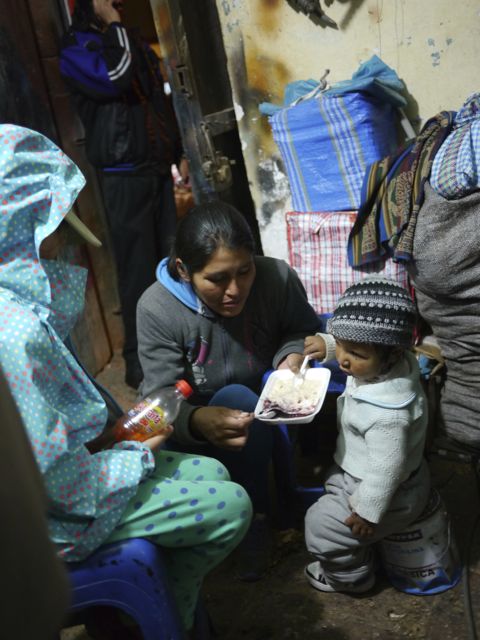
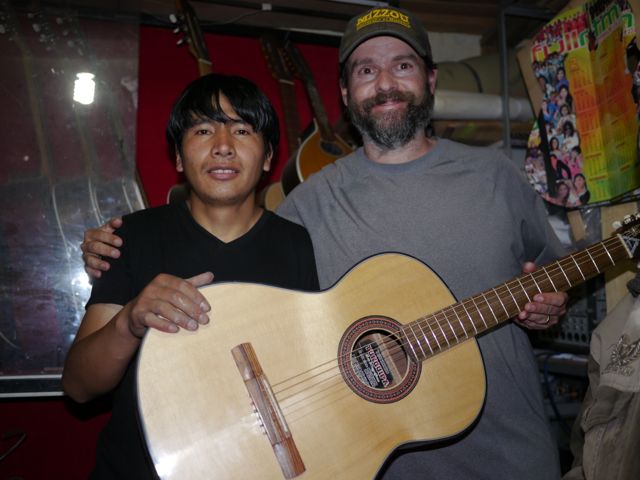


What a story! Thanks for taking time to put that down in writing with all the pictures….
Loved the post! Who would have thought that making a guitar could lead to so many adventures? Hope that you enjoy playing it as much when you get home. 🙂